ABOUT
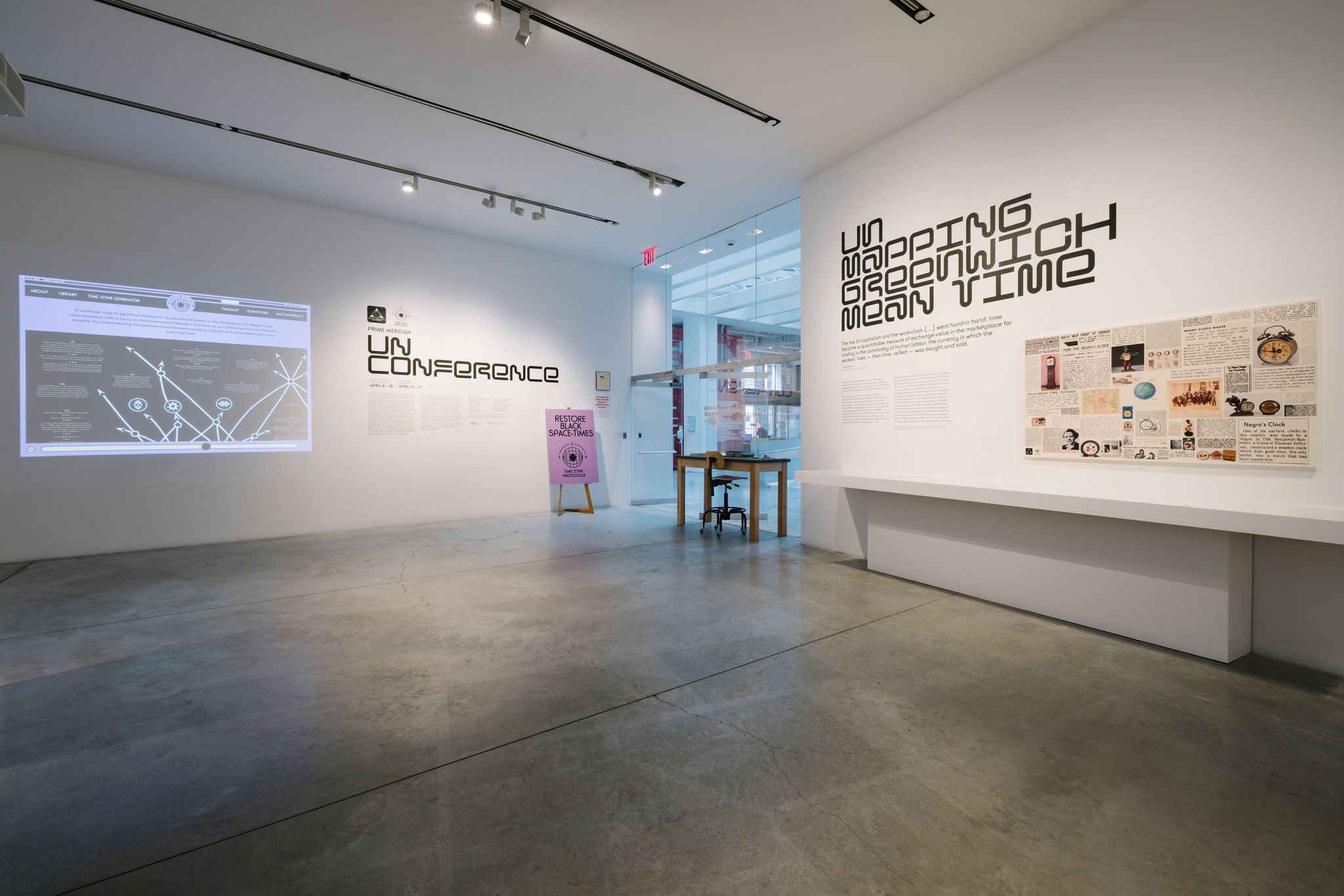
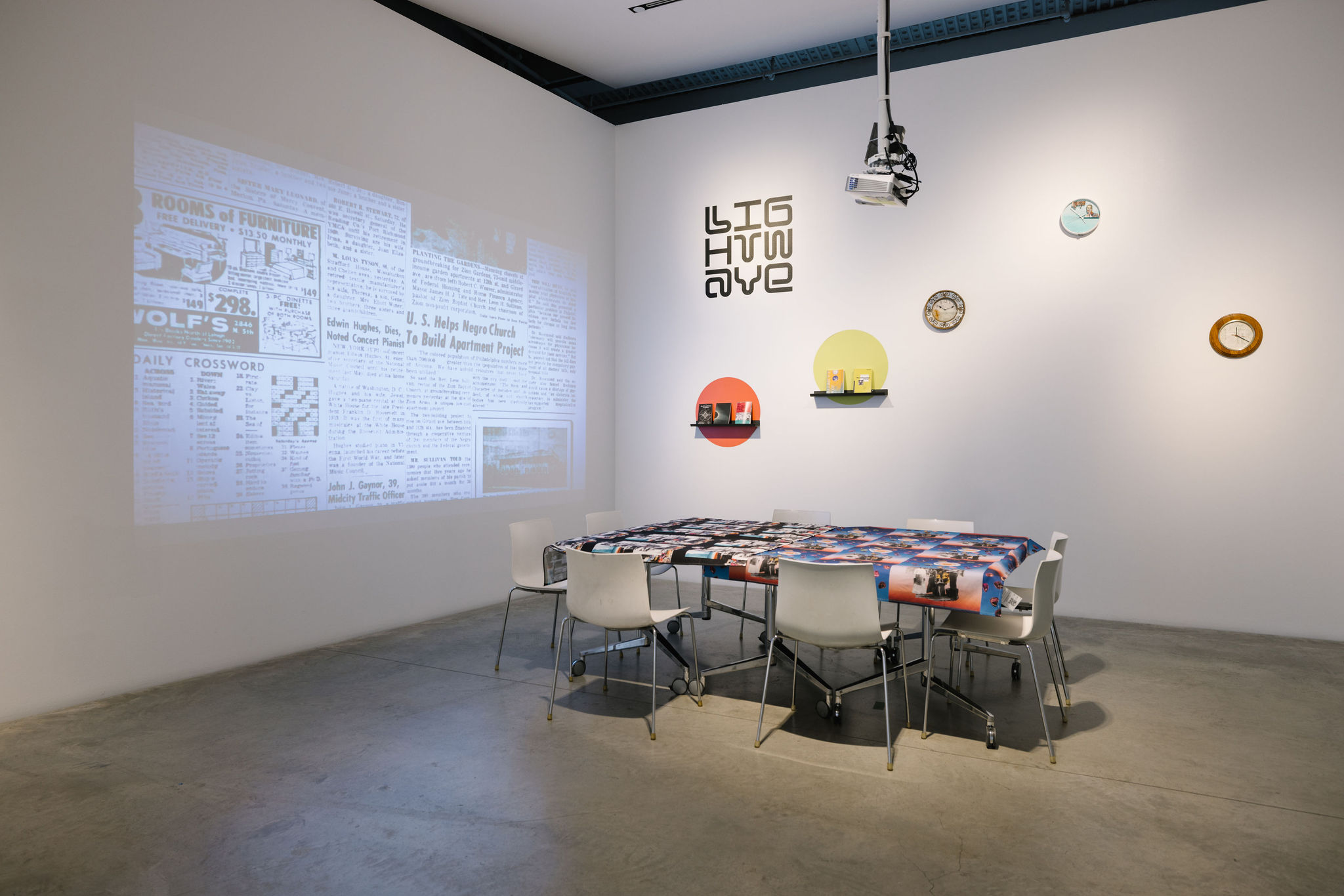
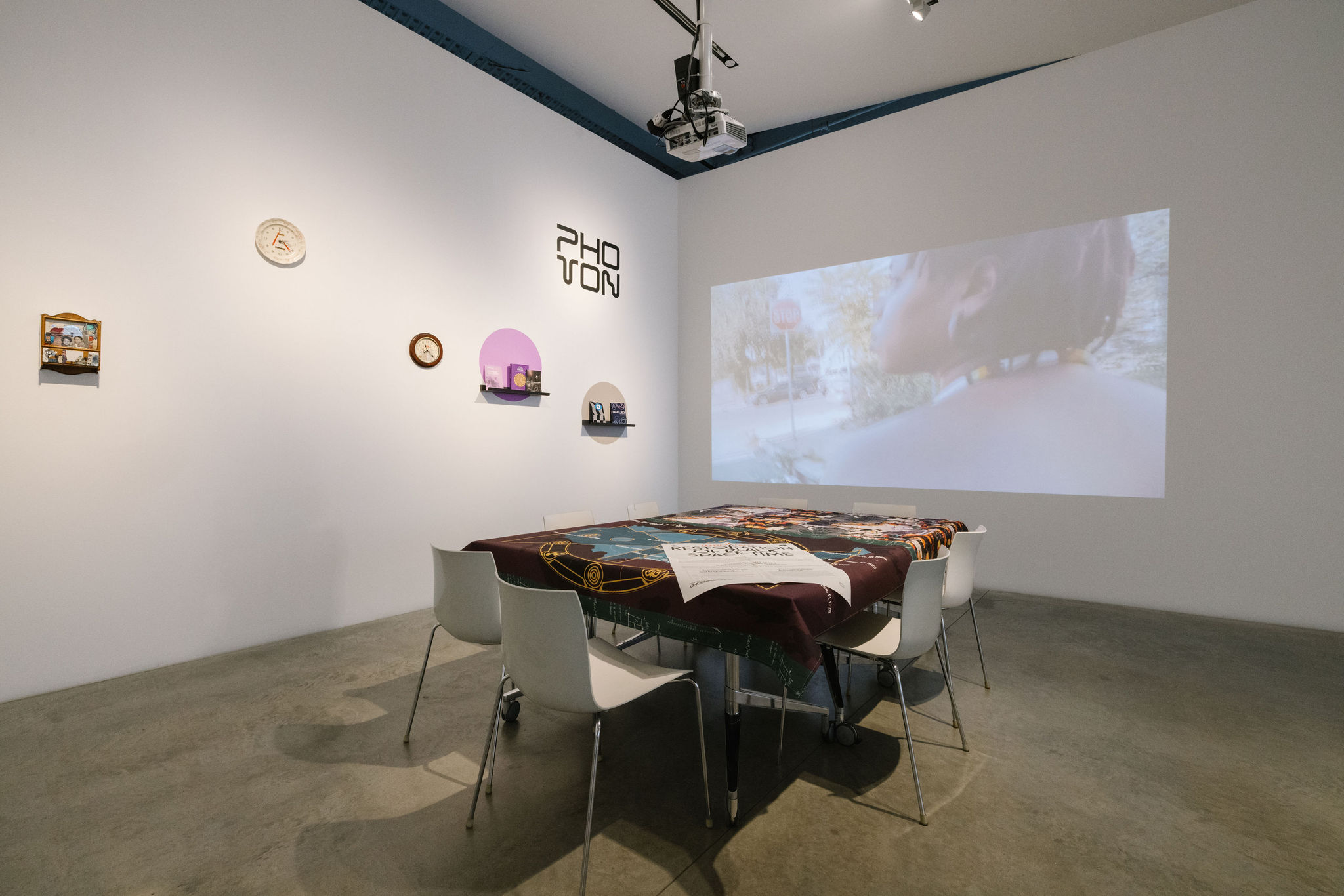
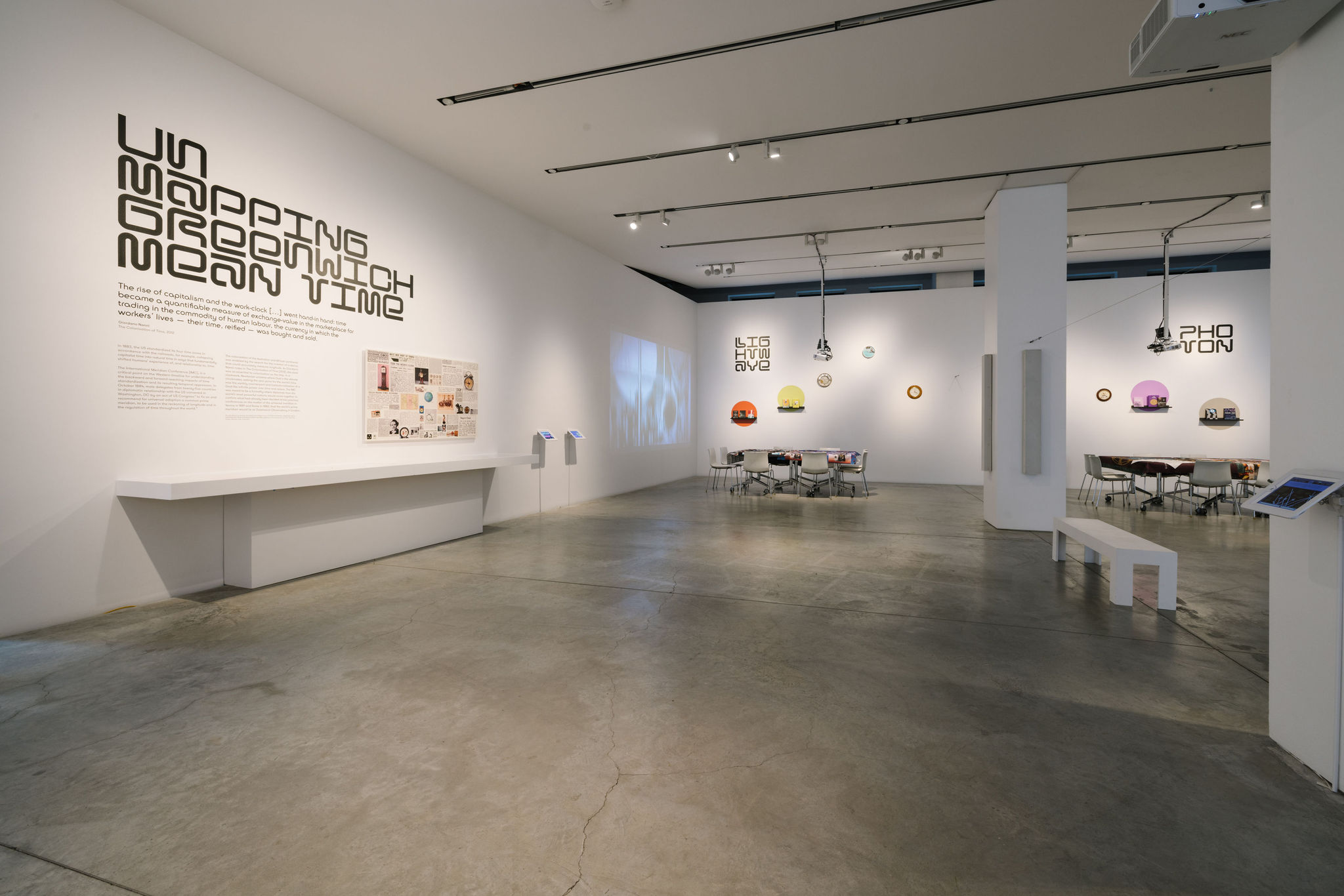
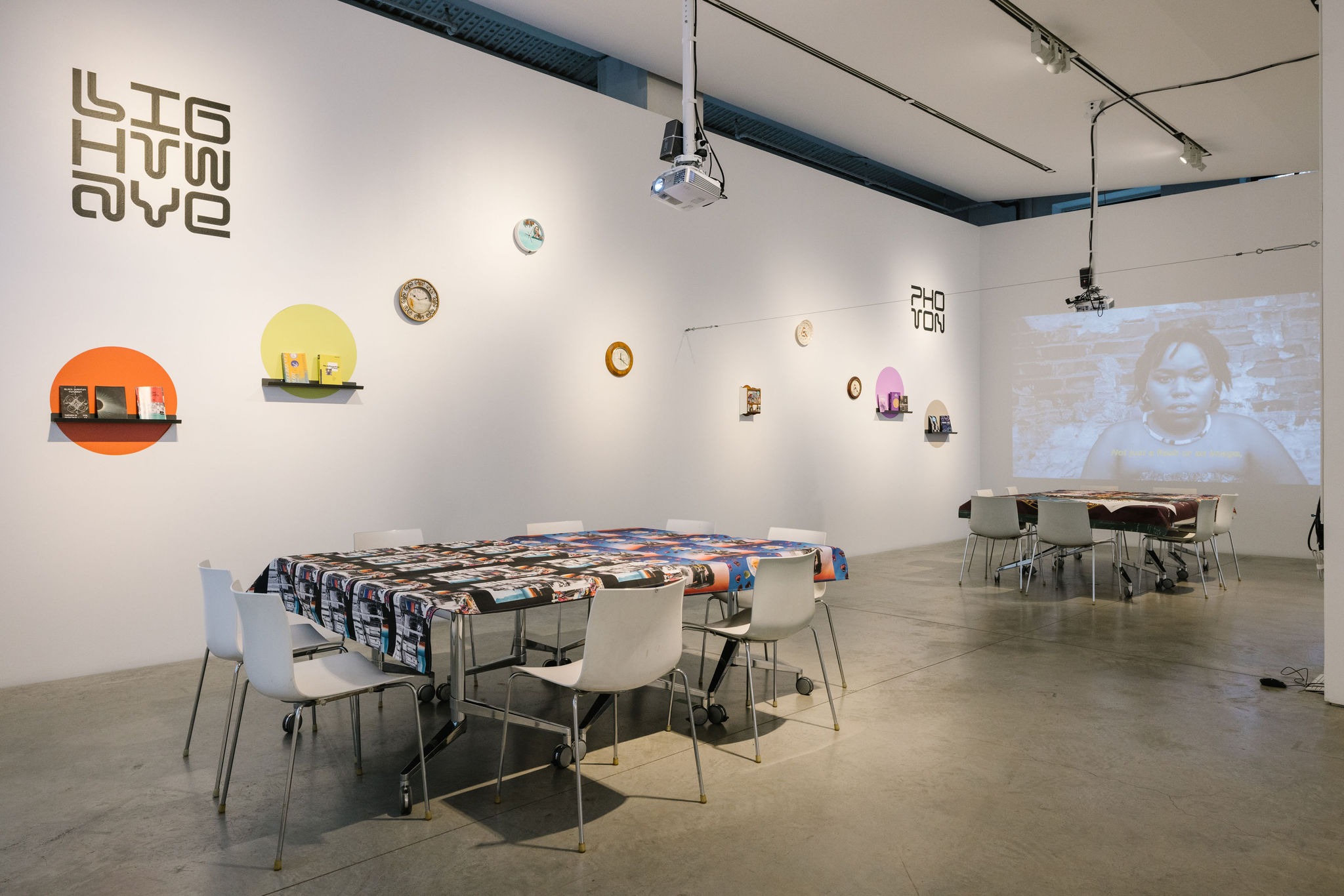
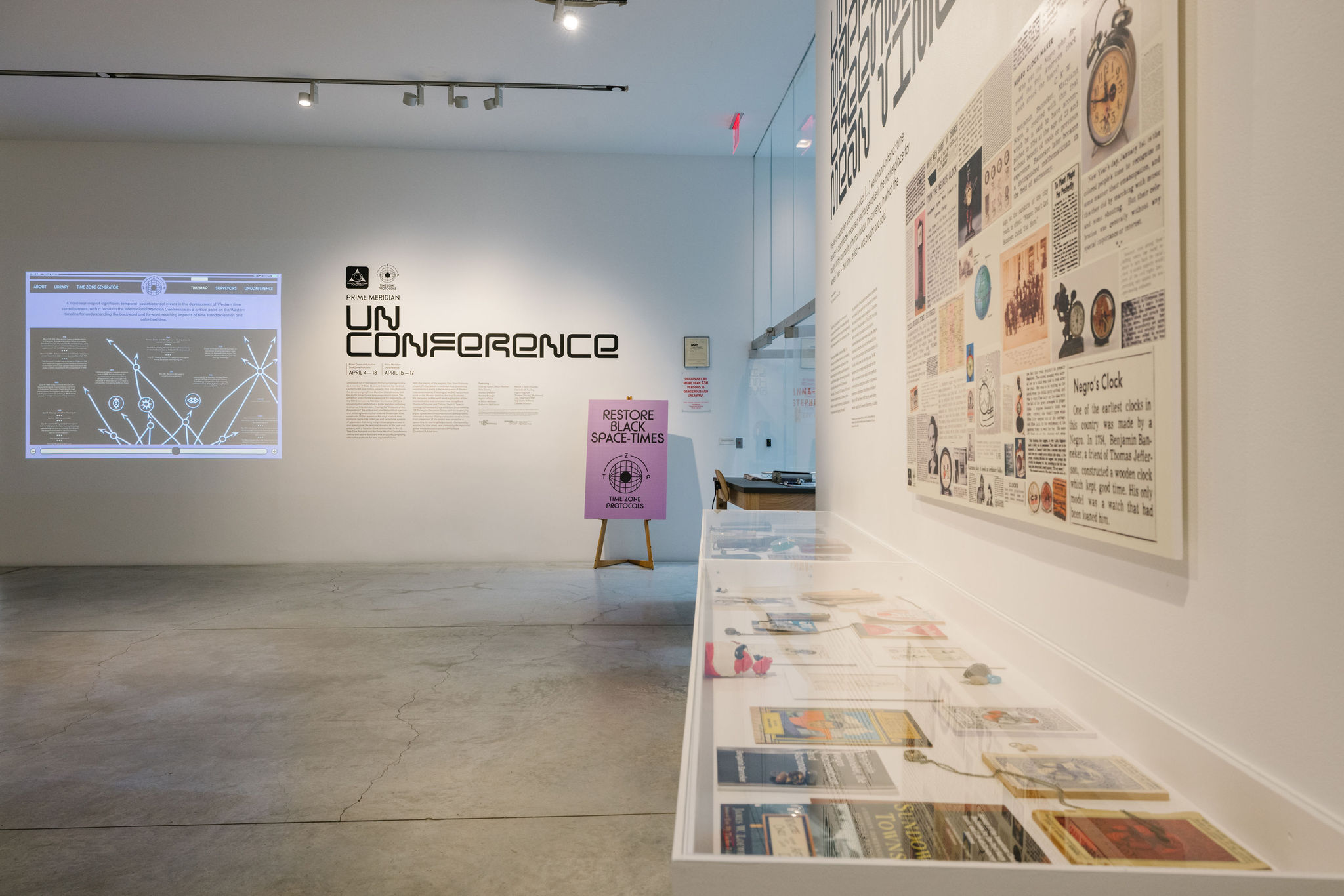
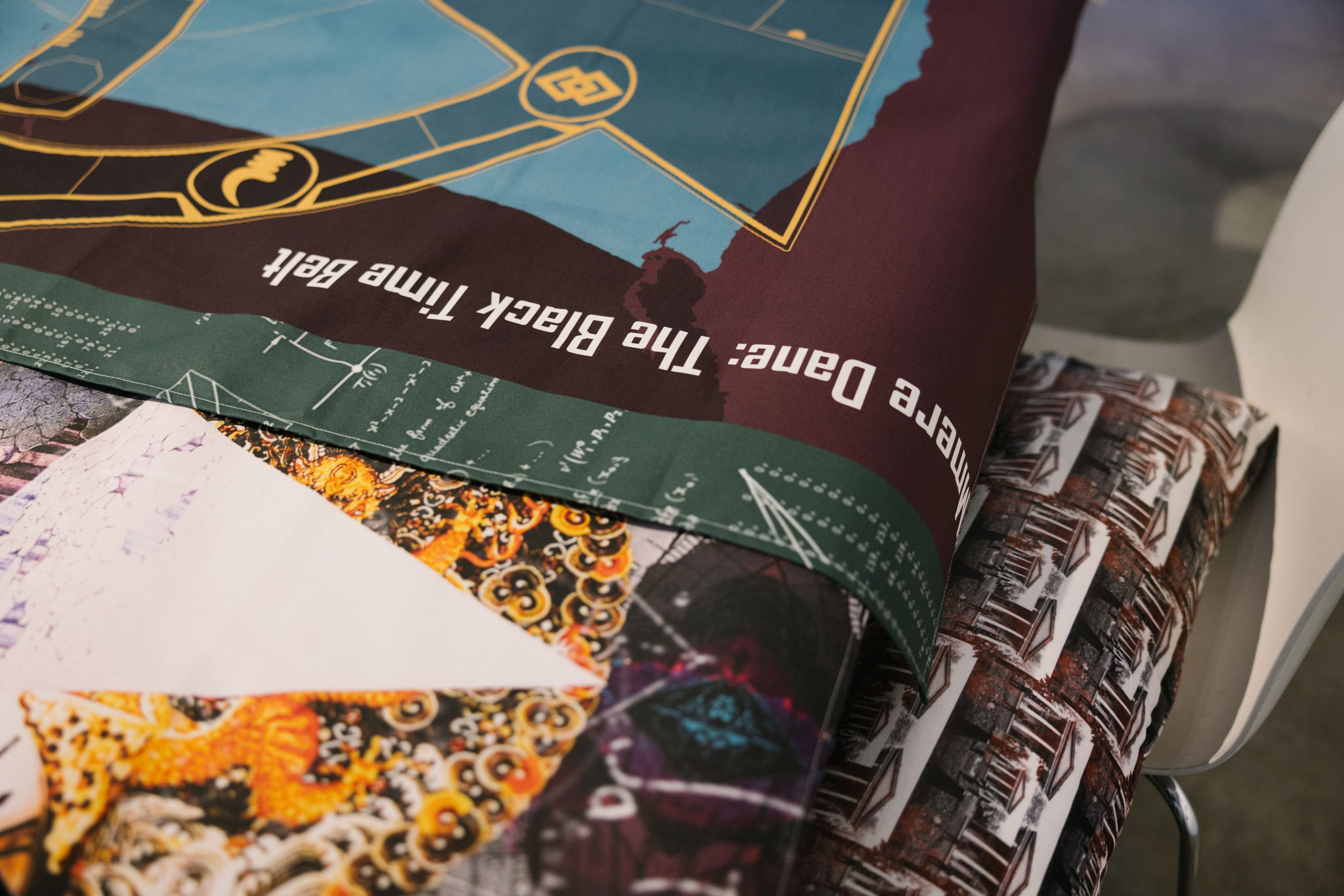
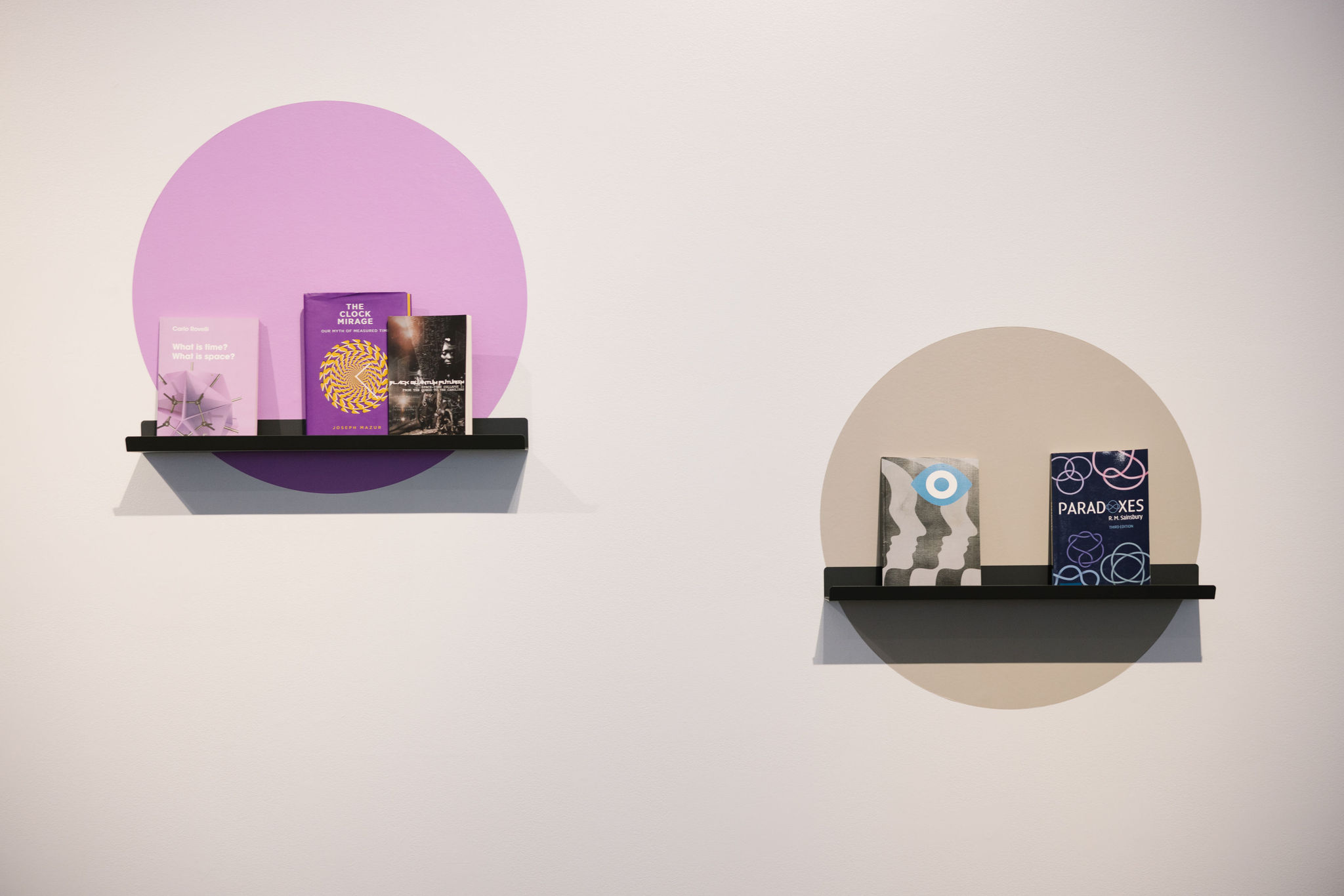
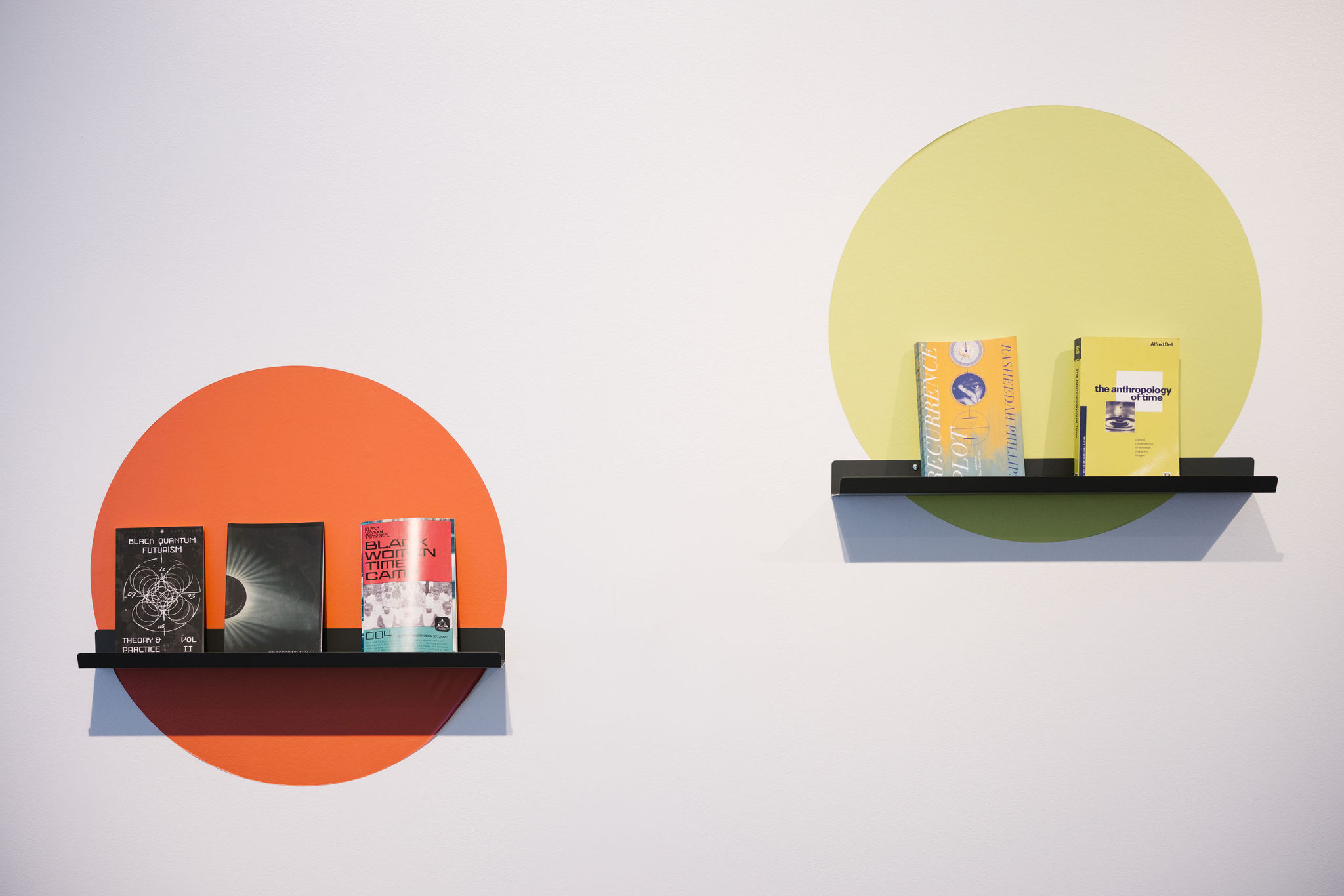
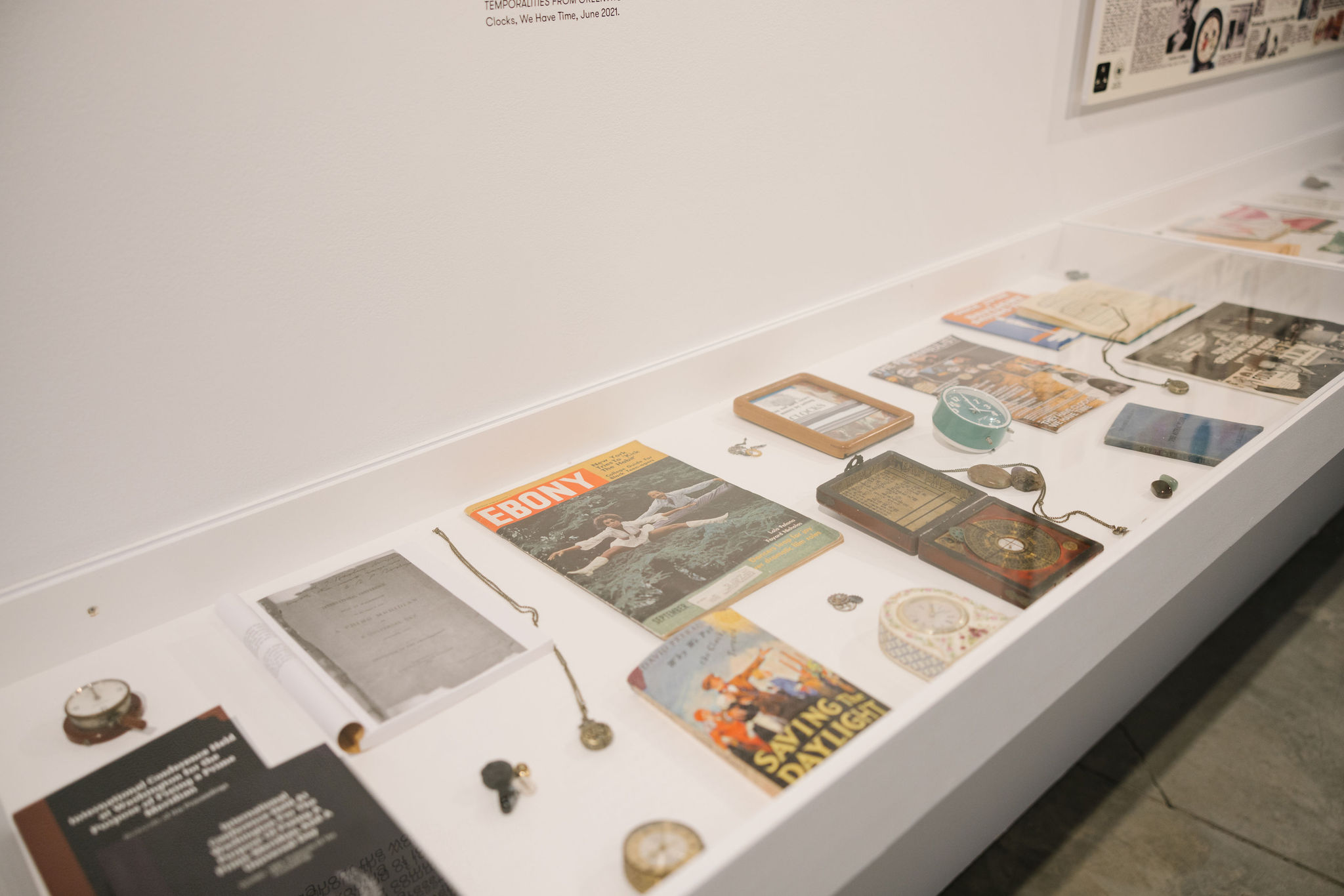
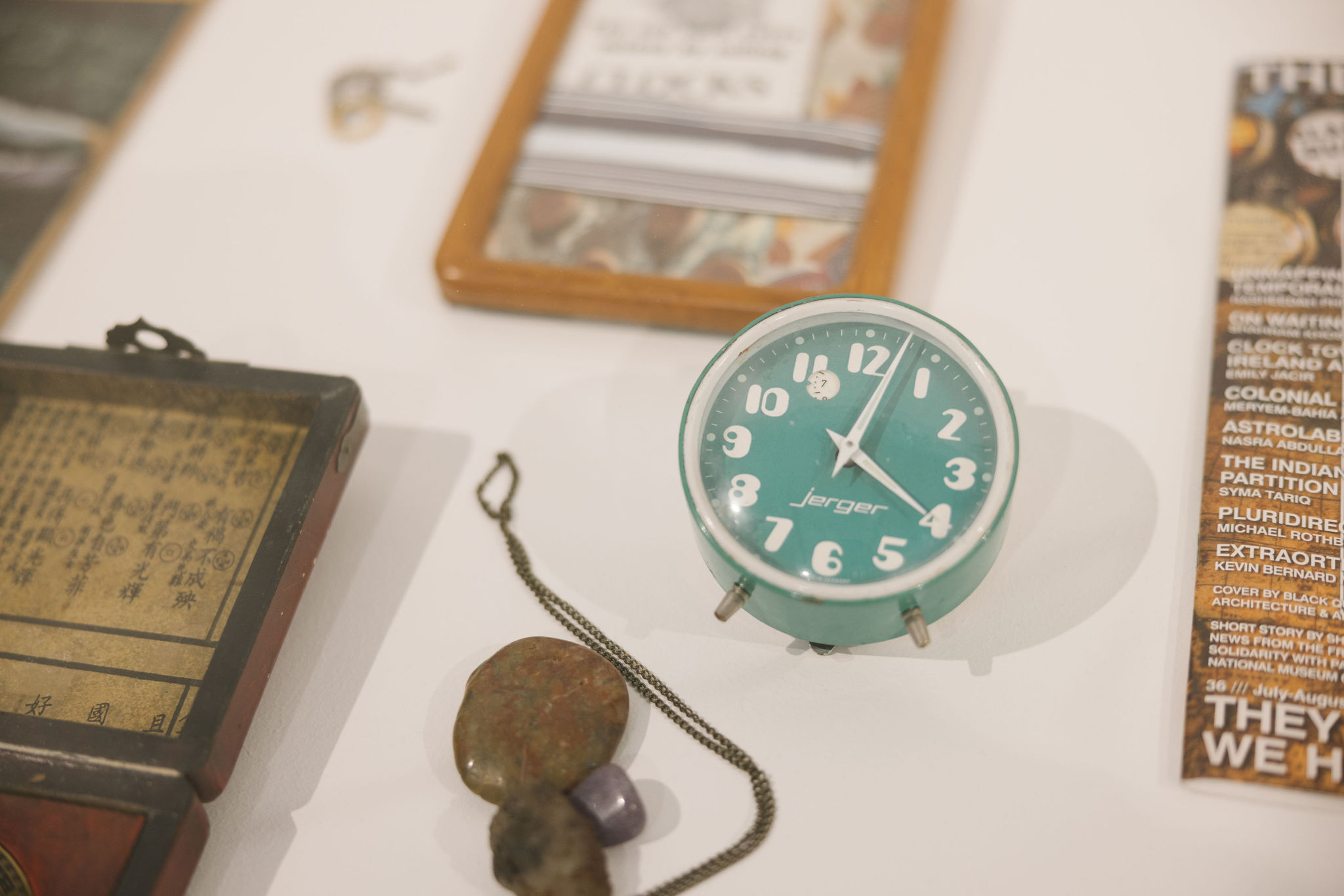
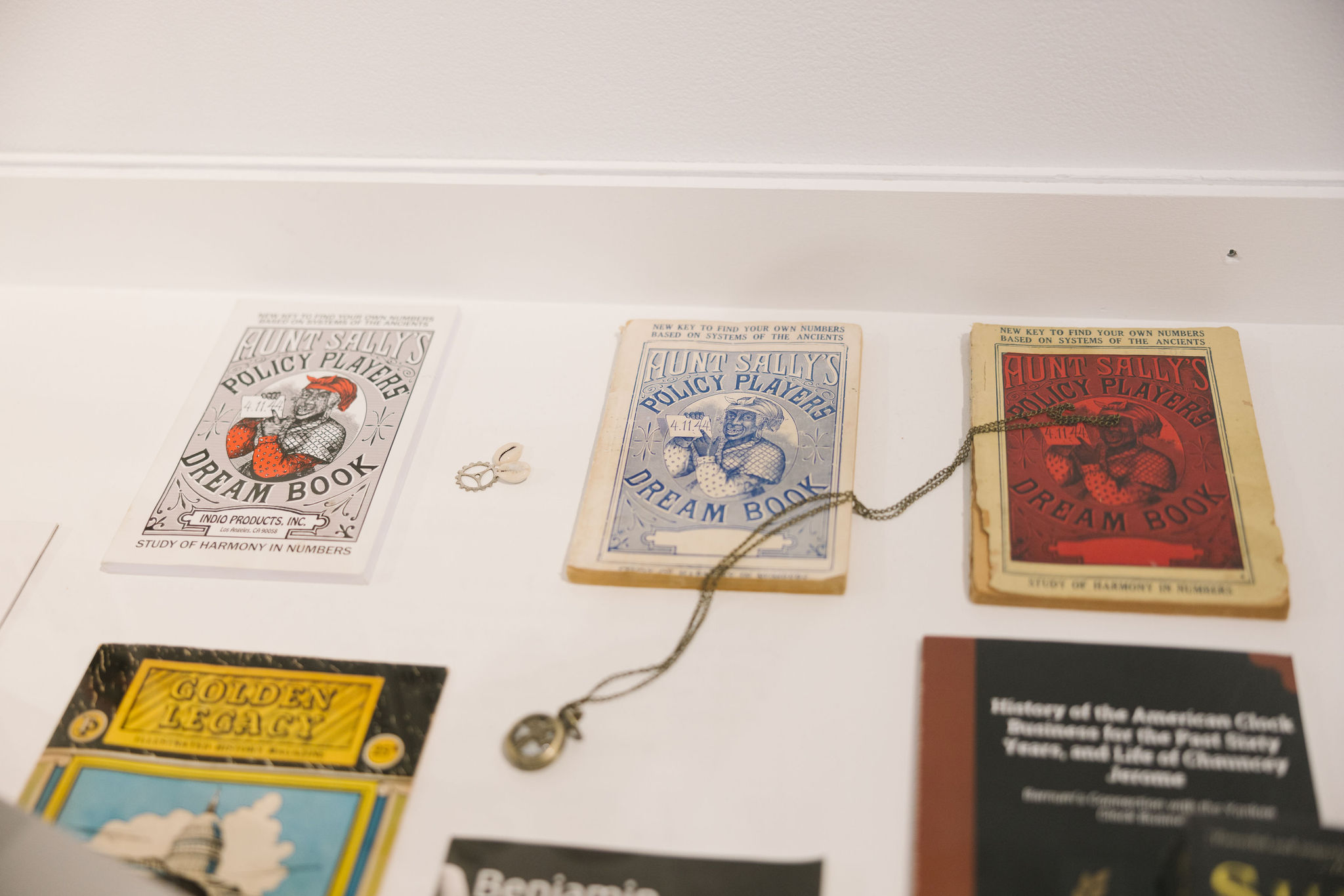
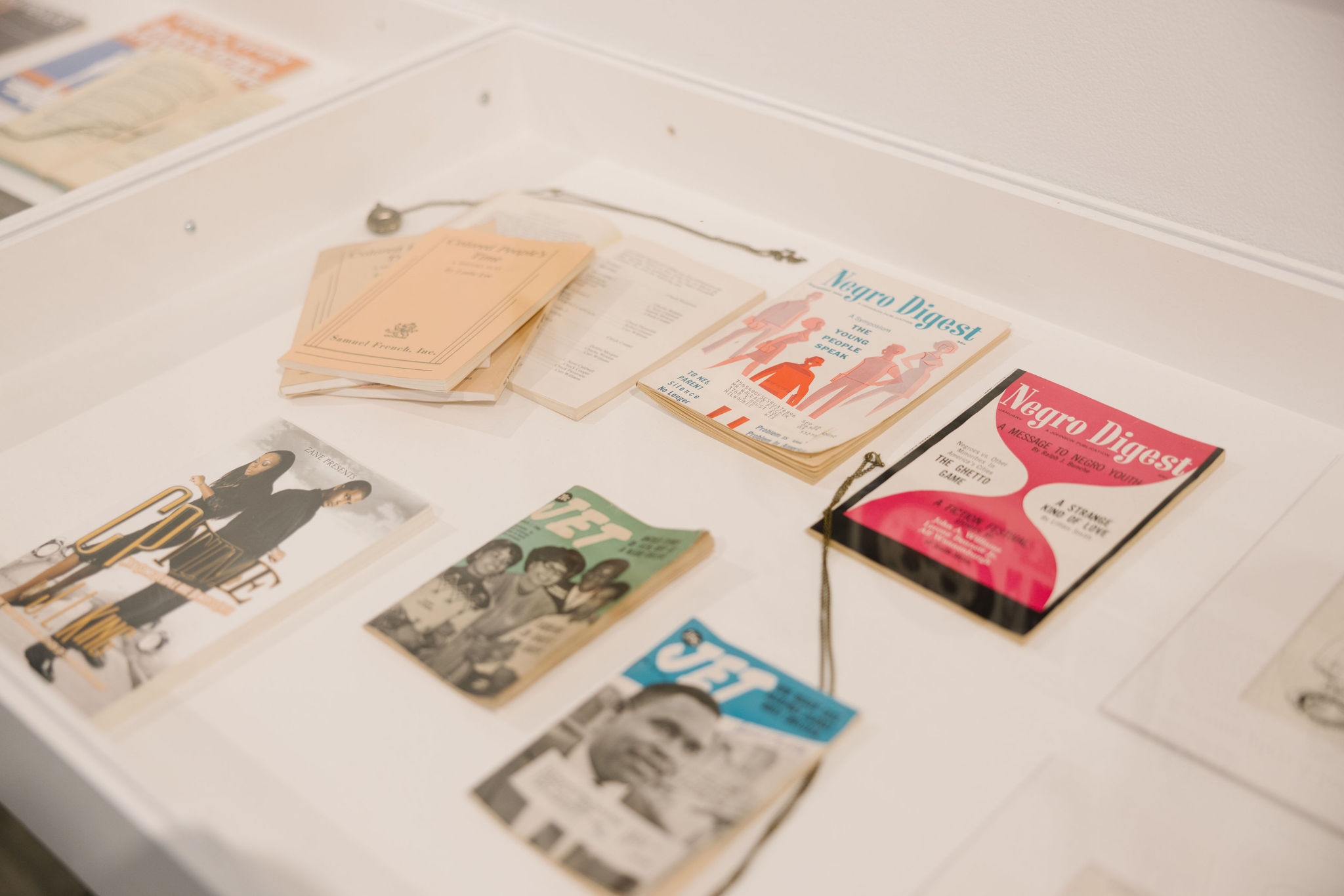
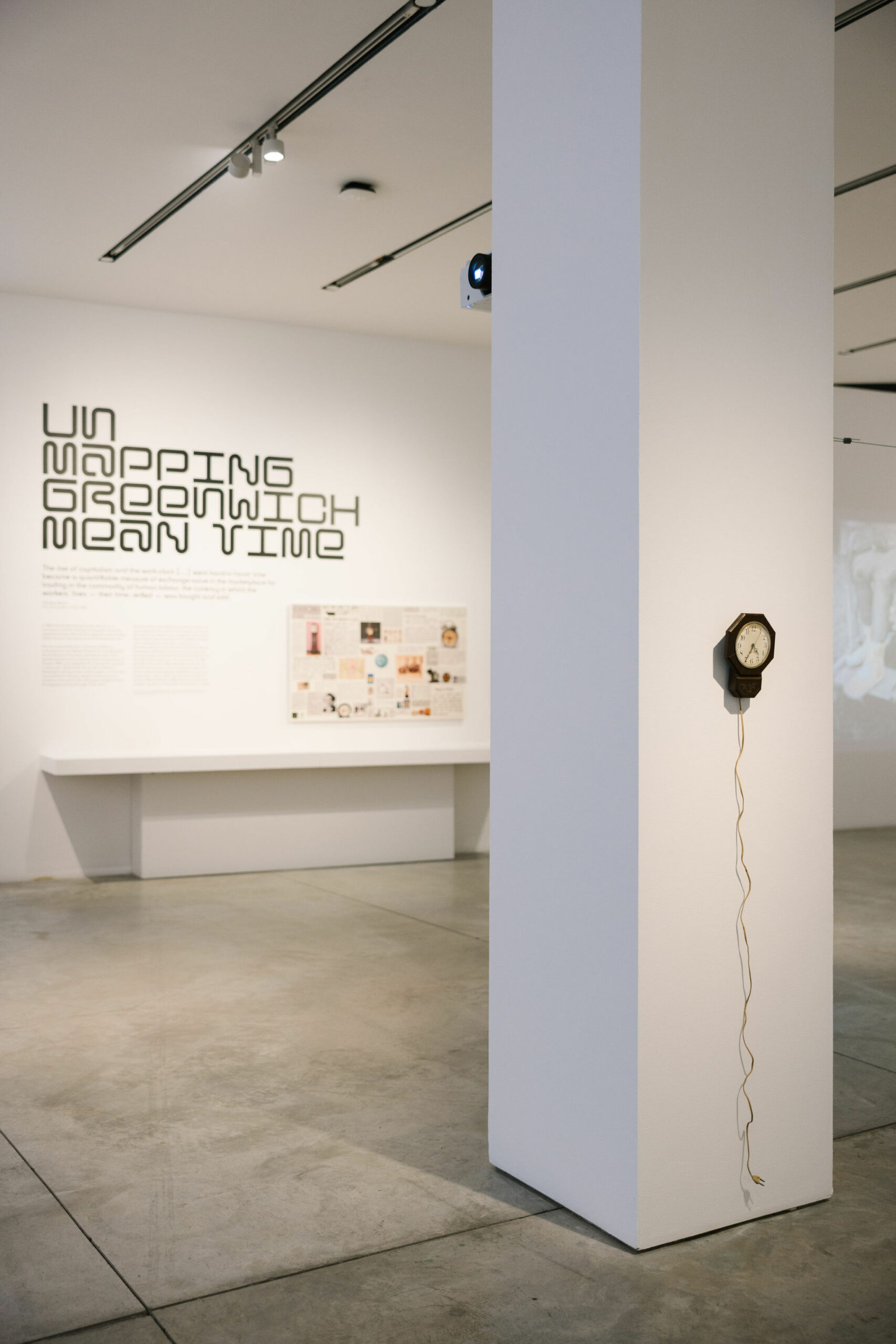
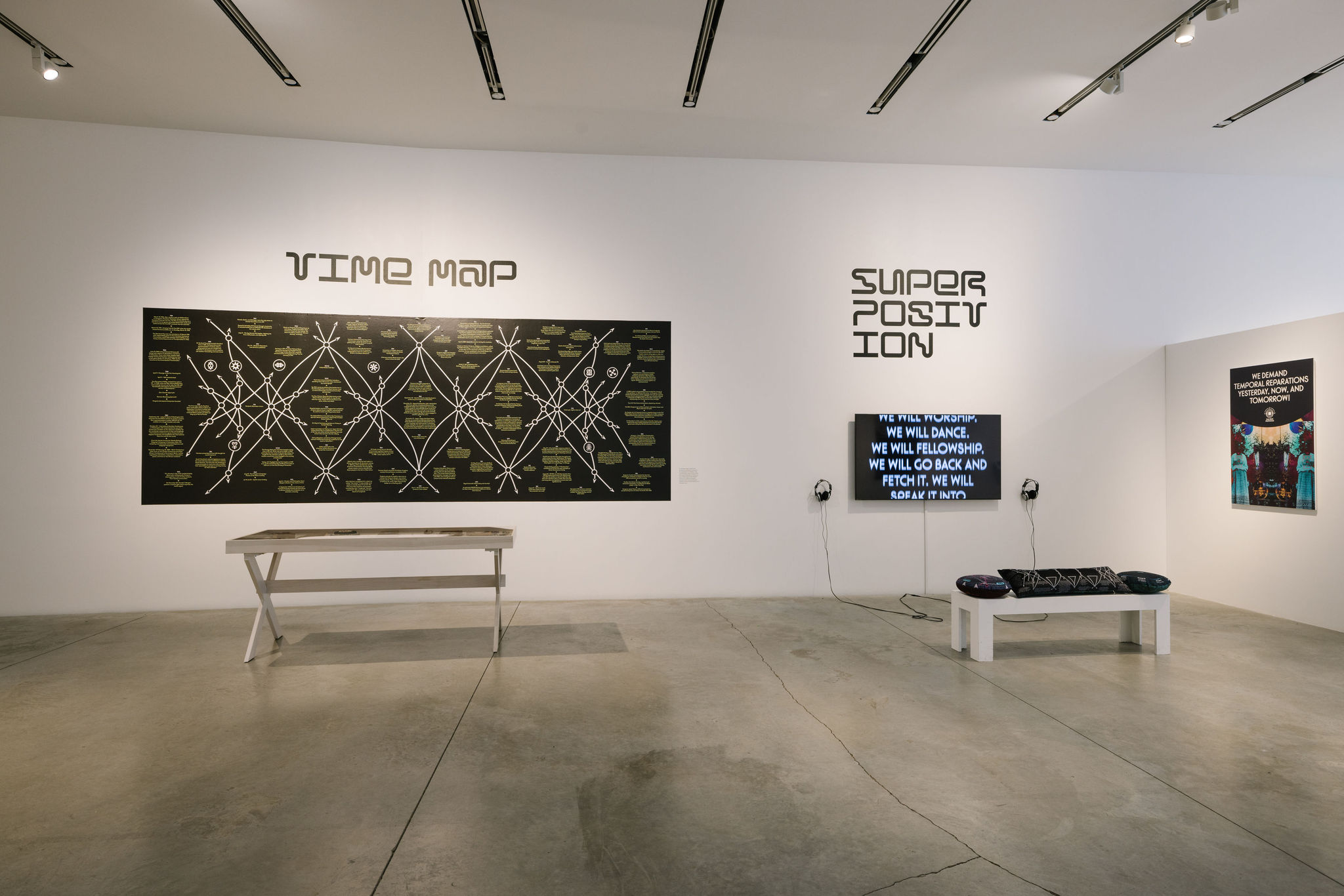
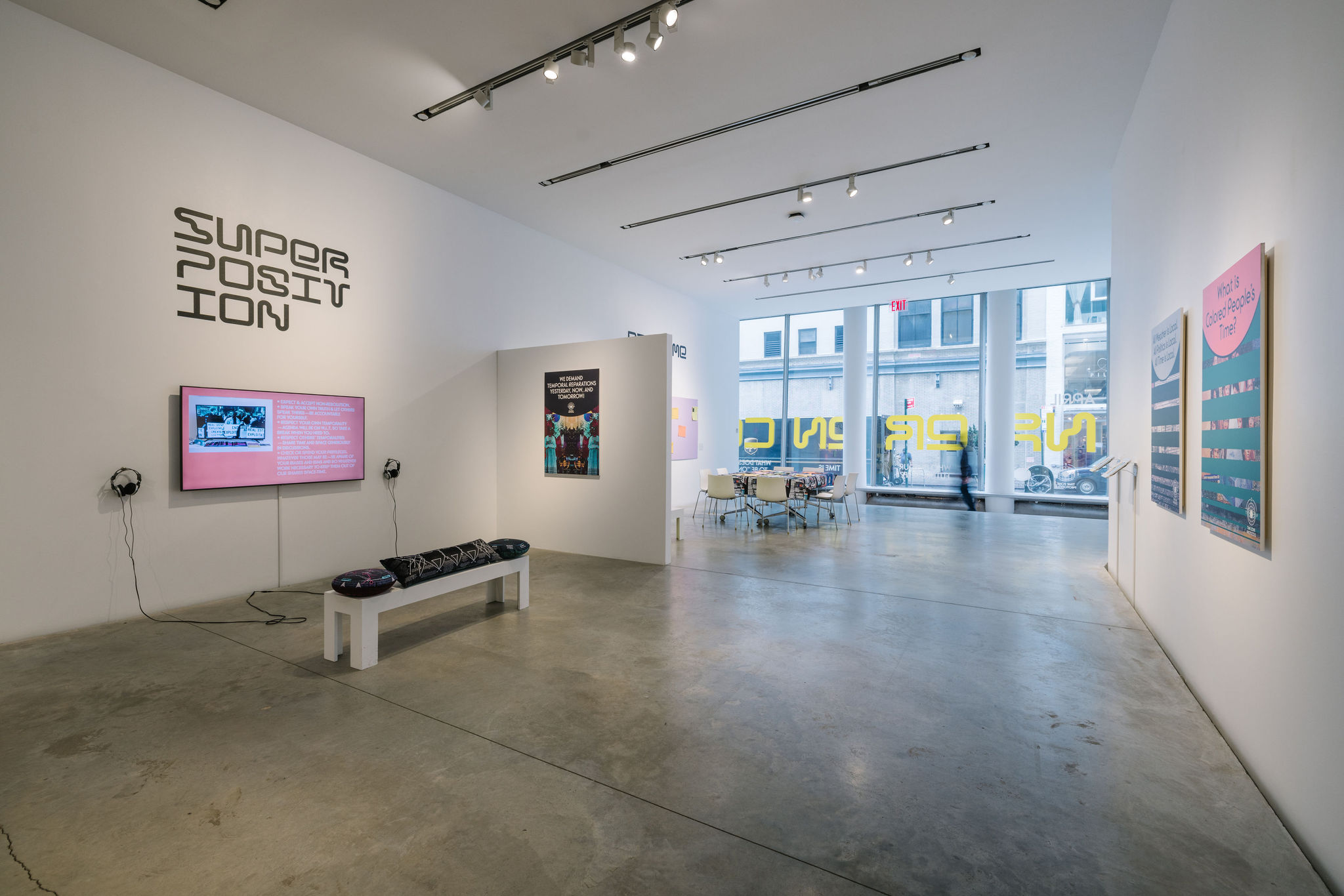
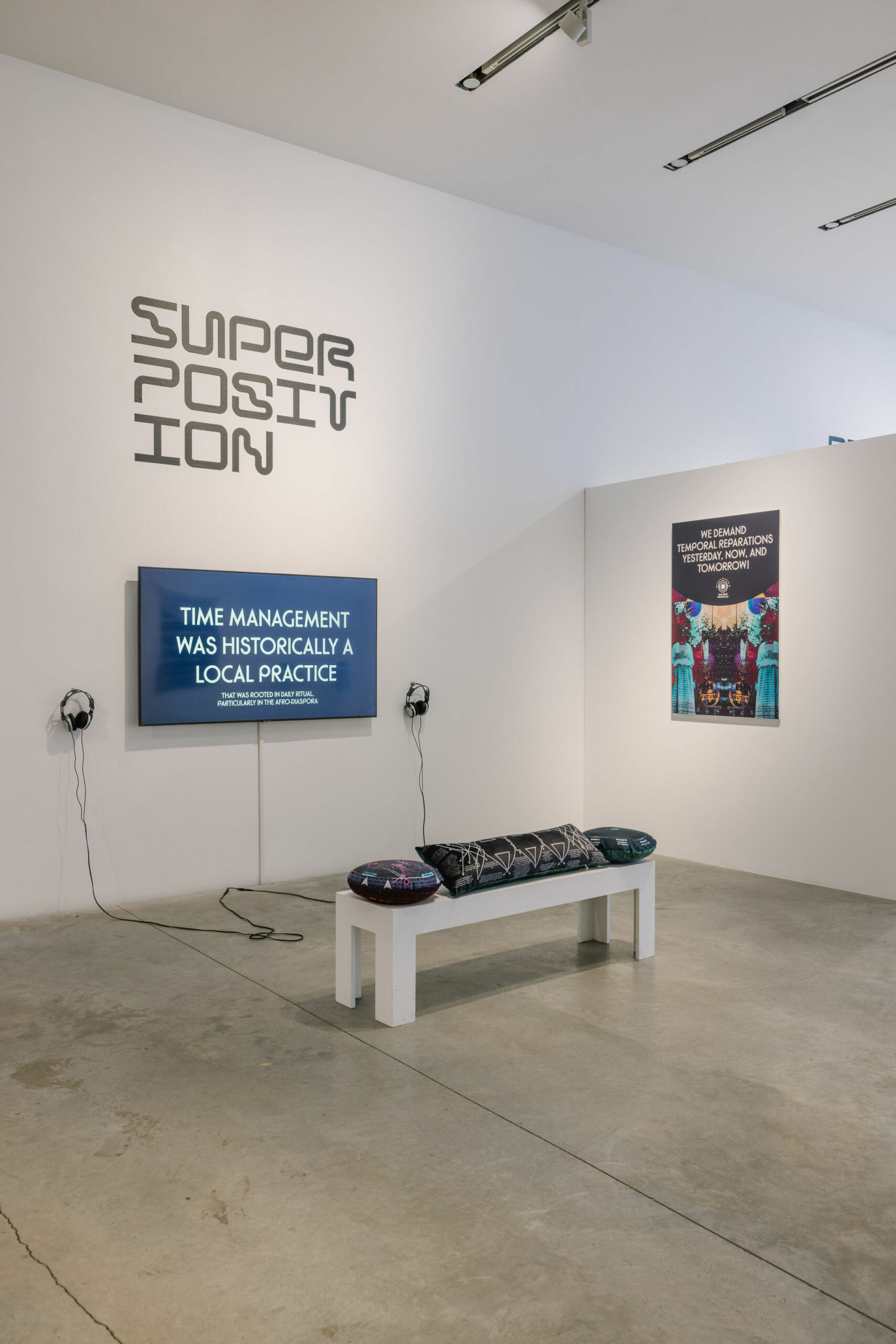
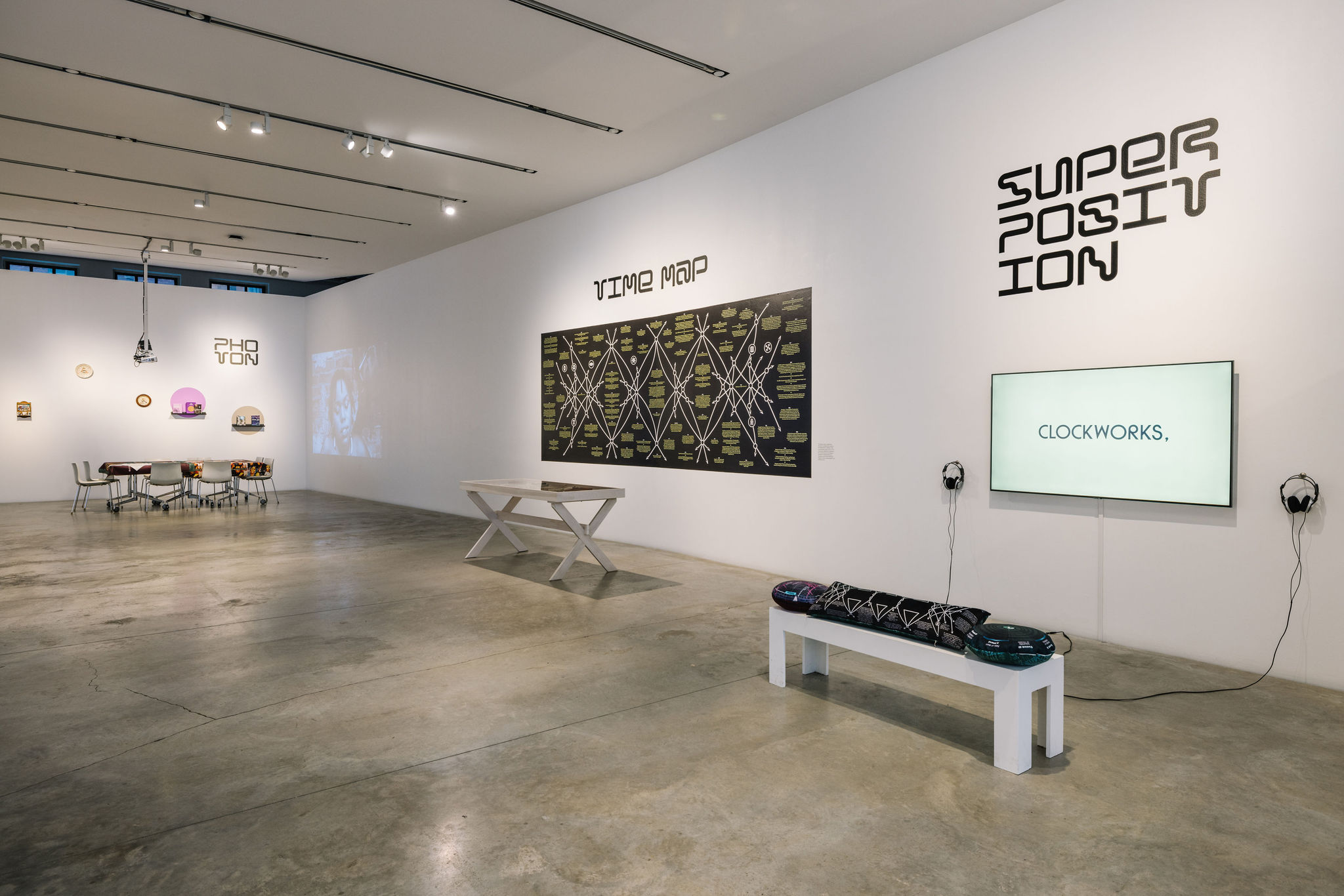
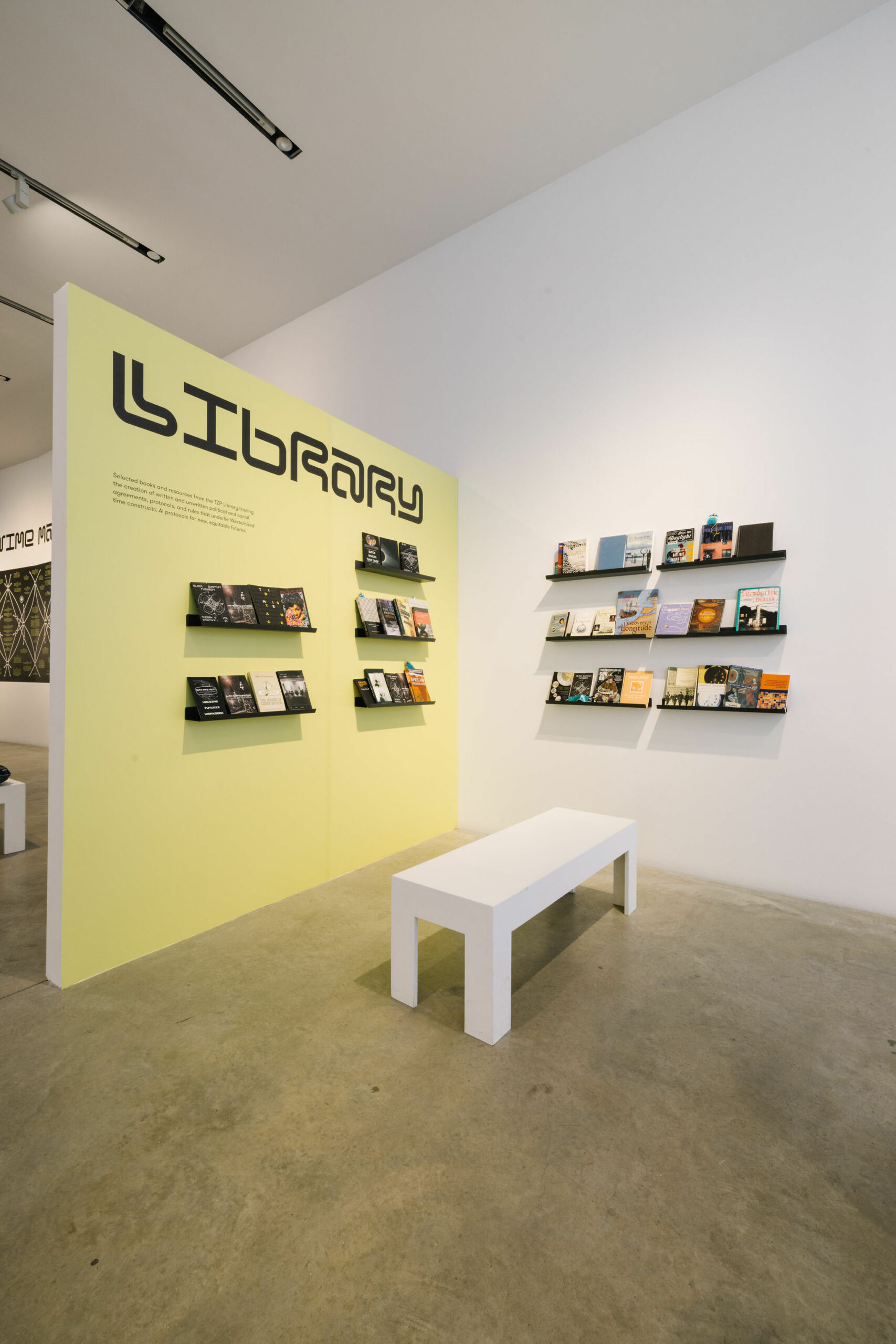
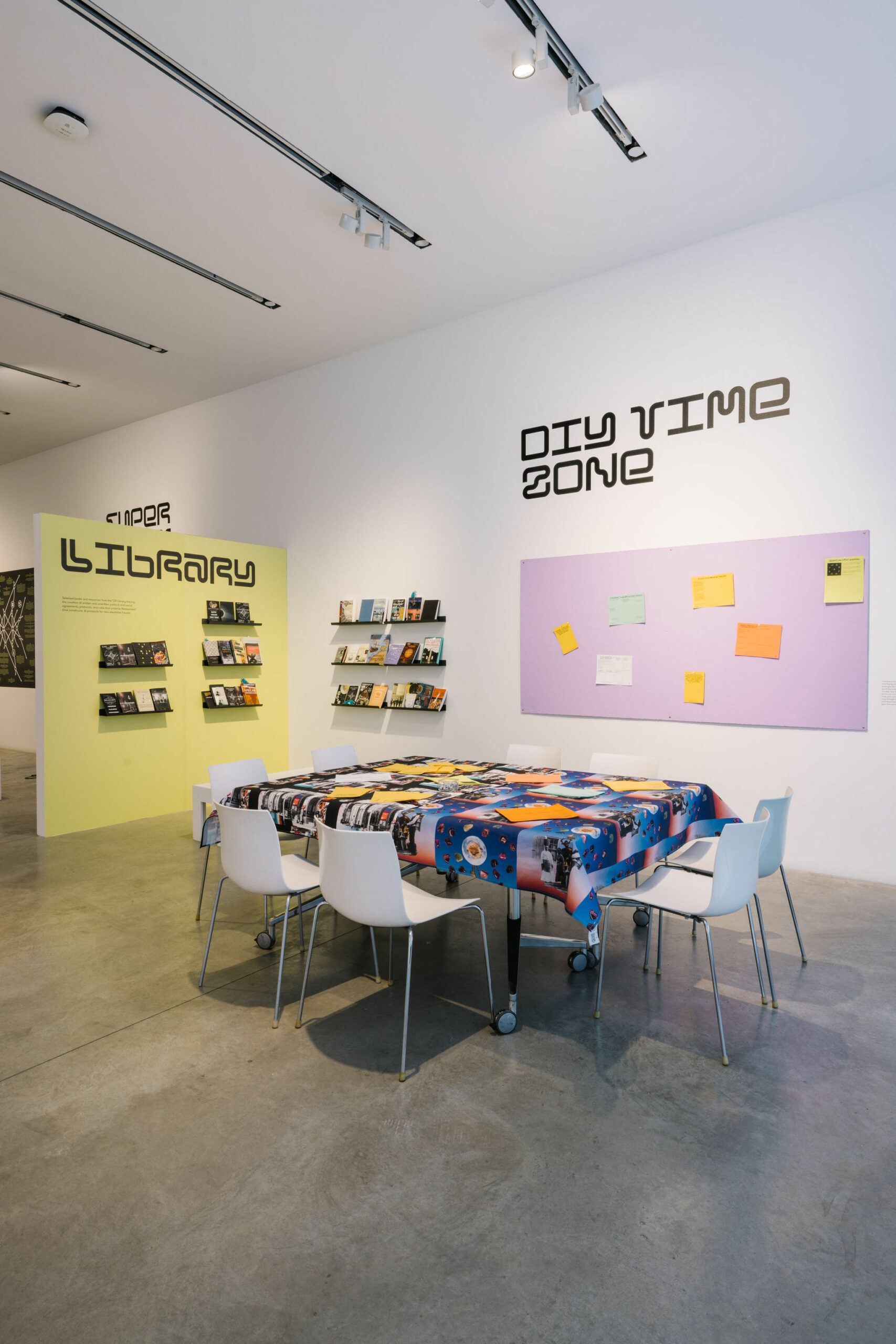
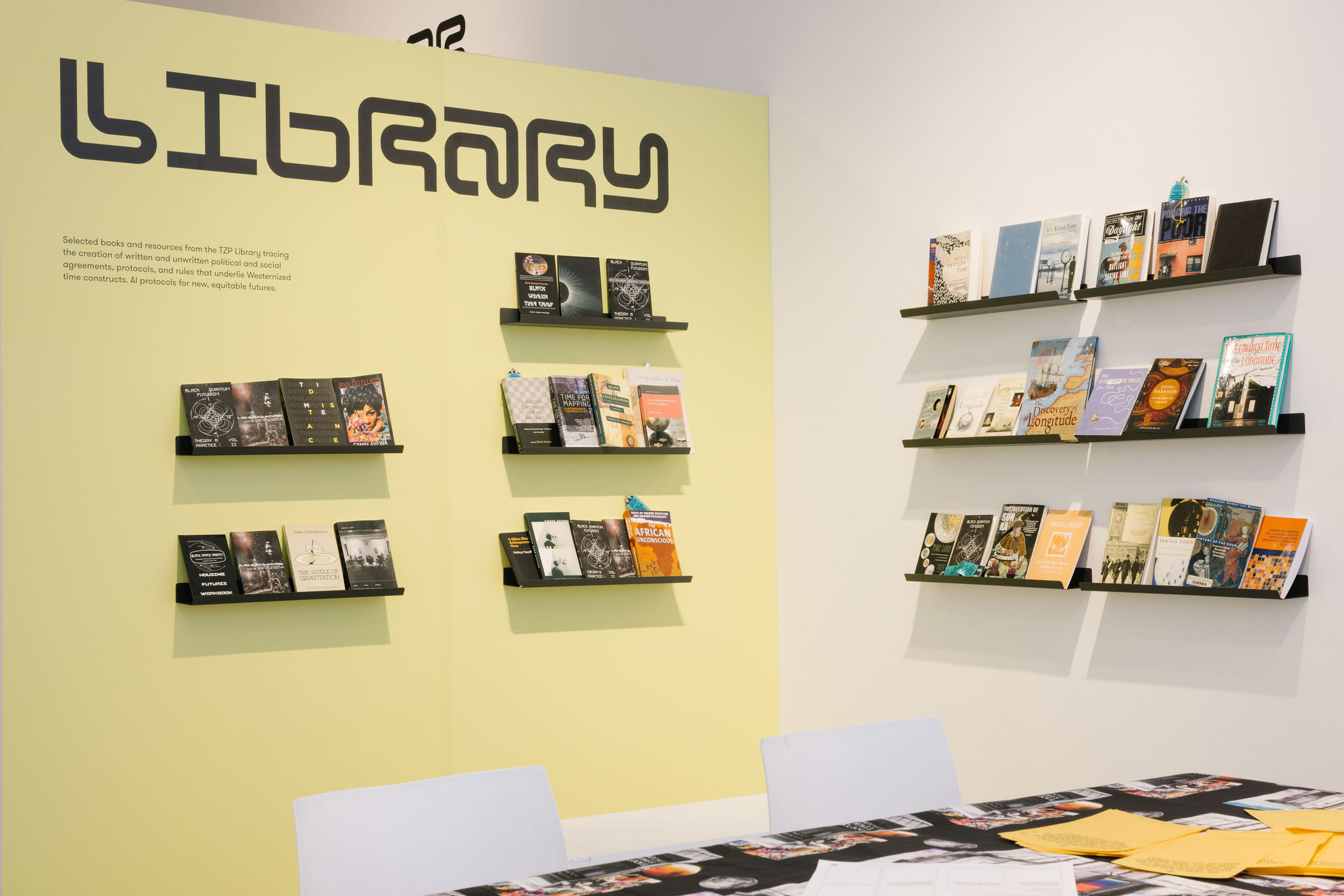
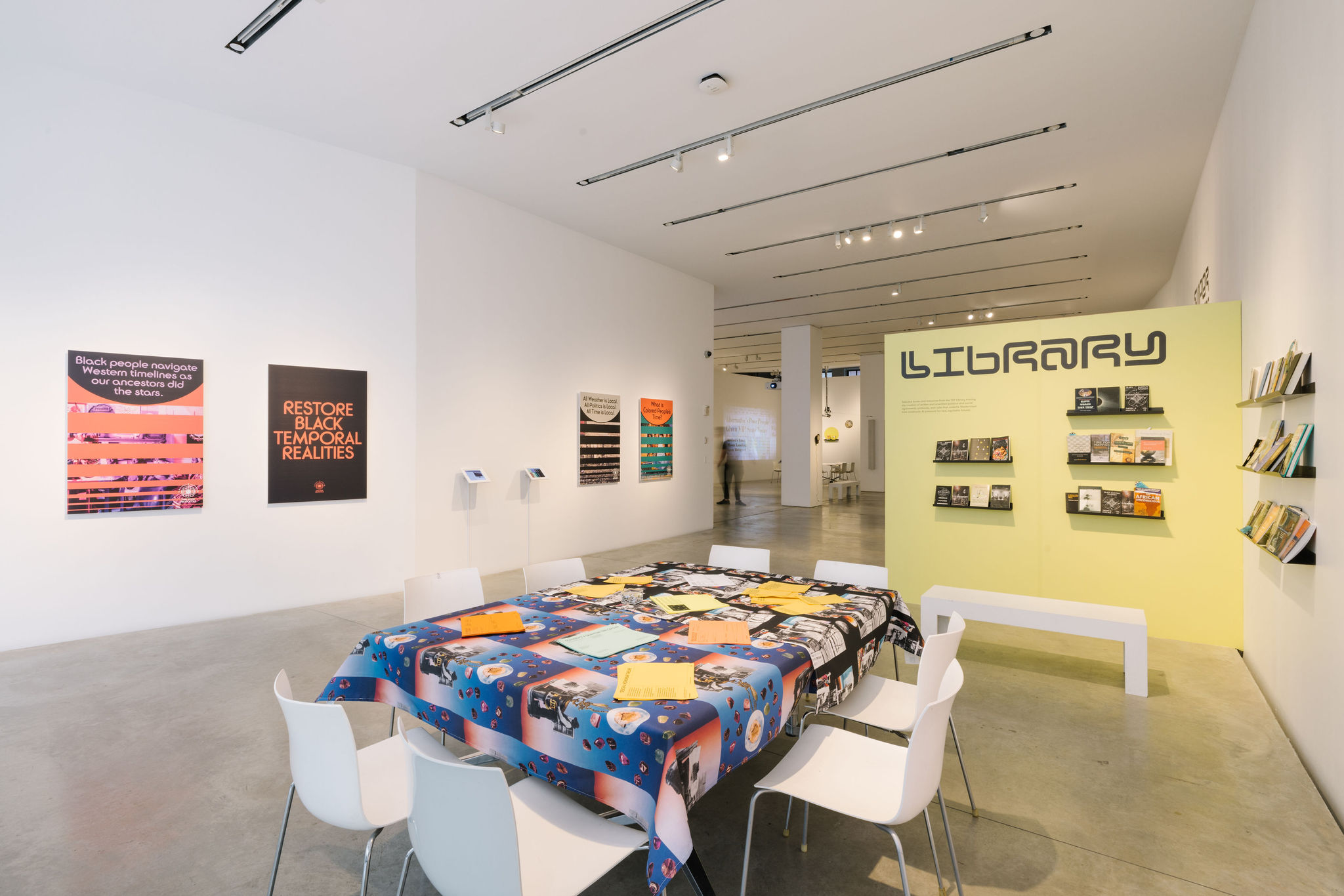
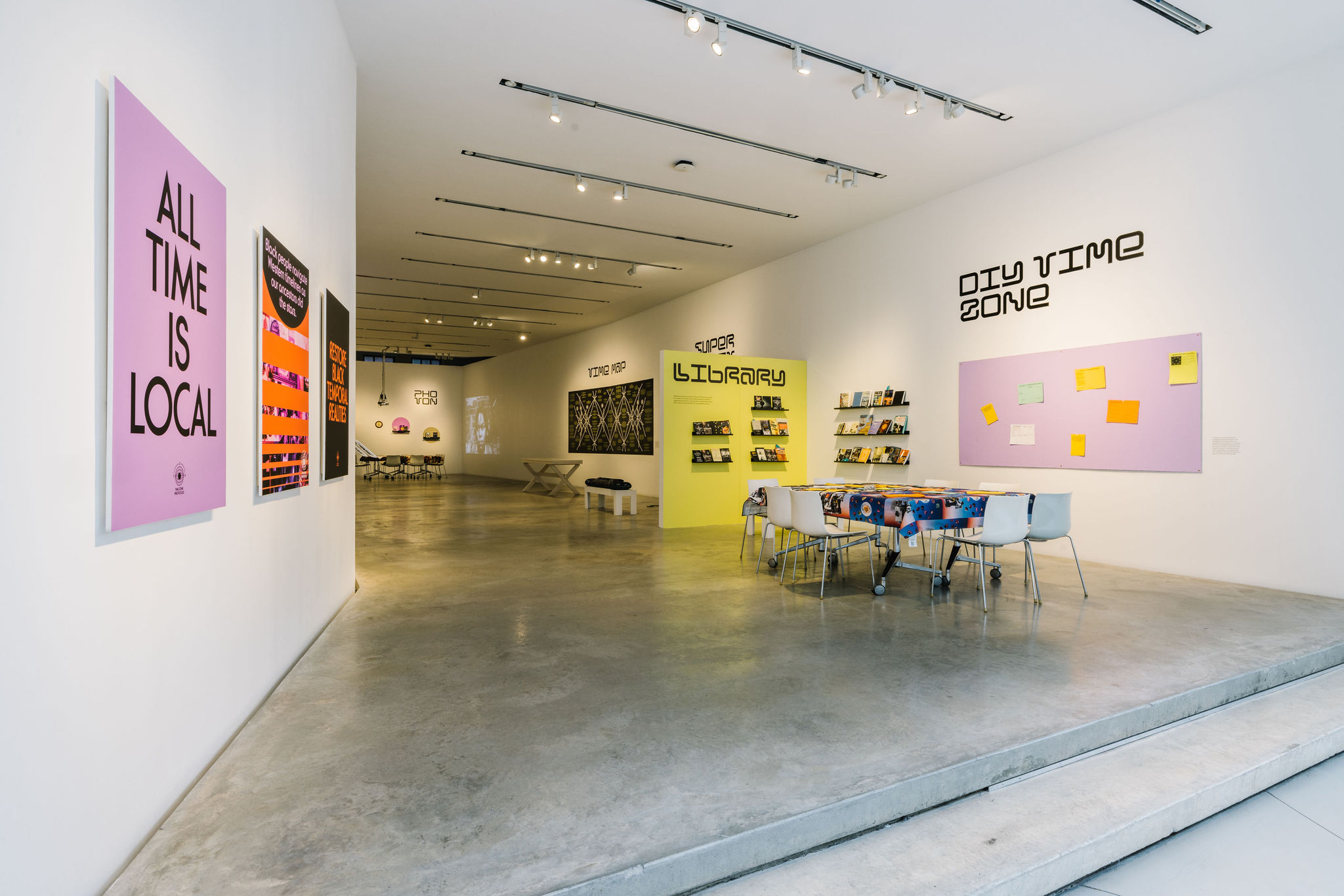
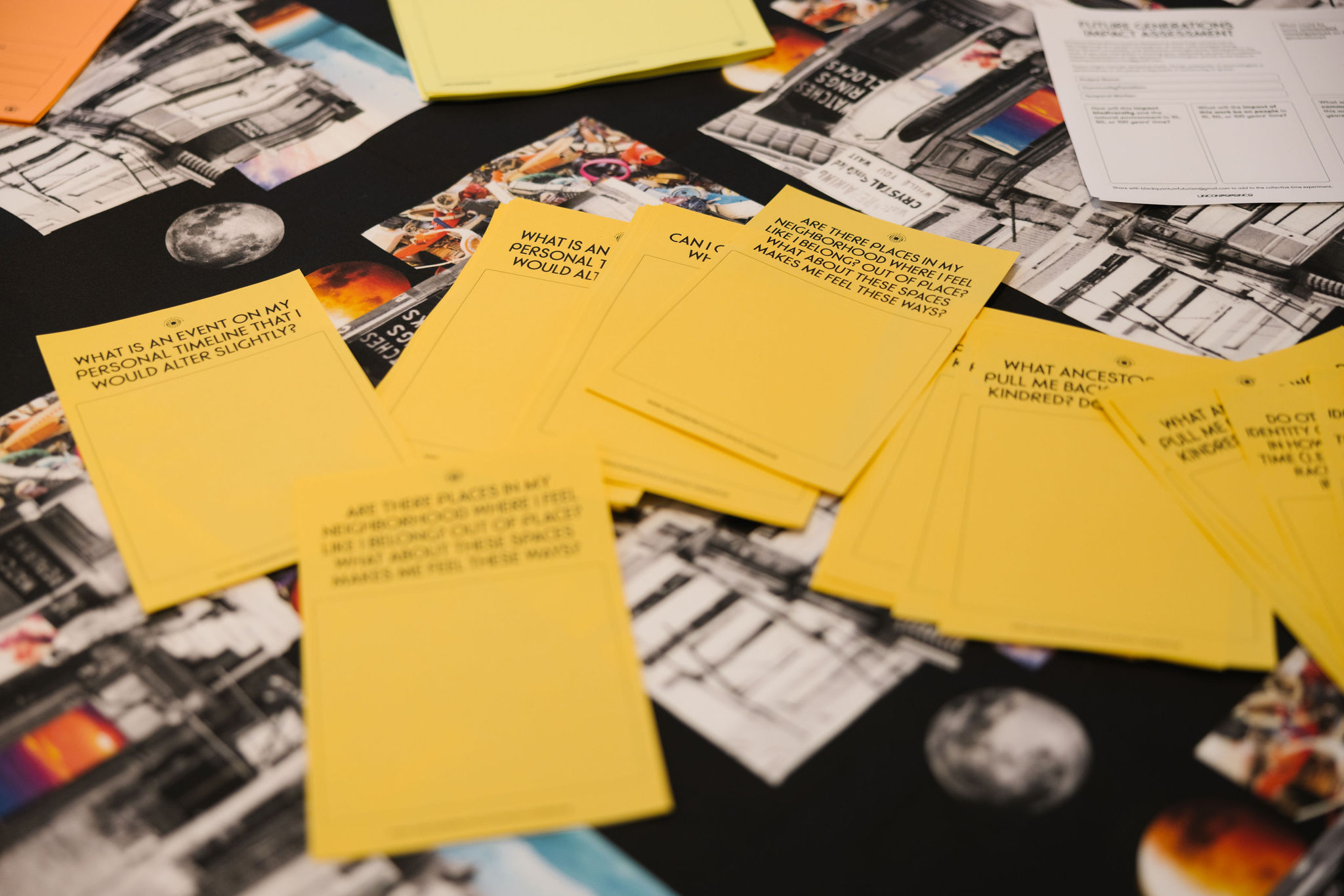
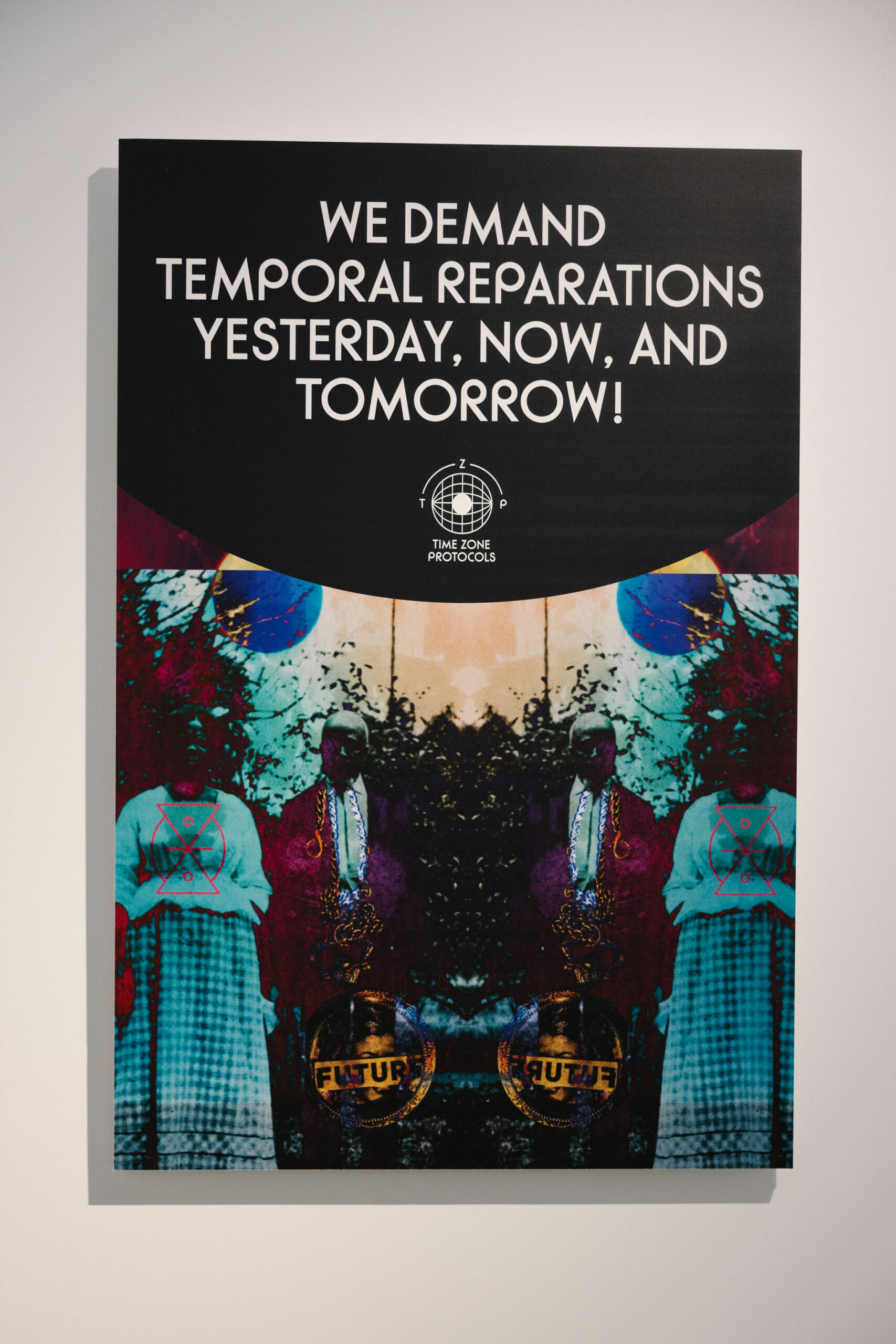

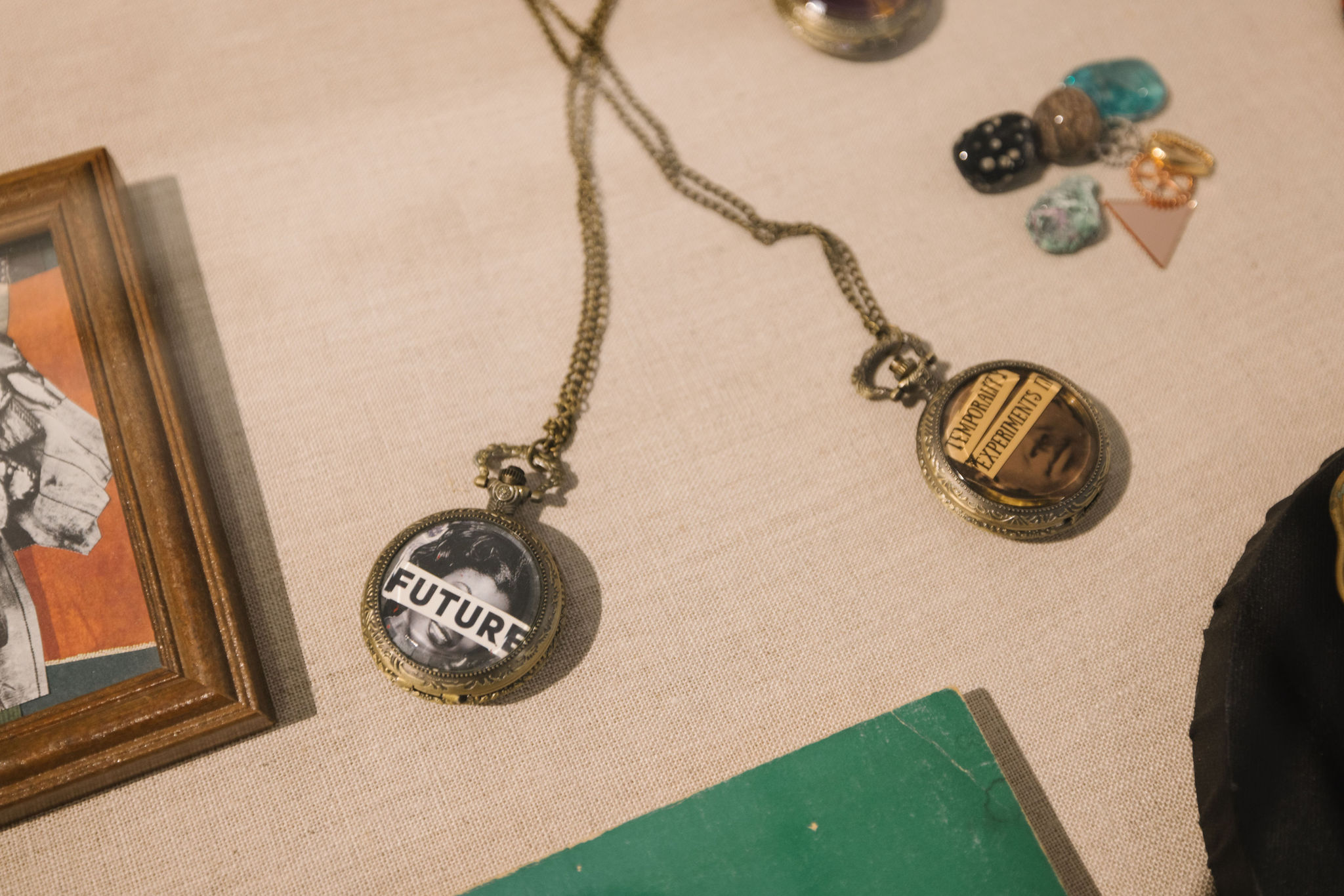
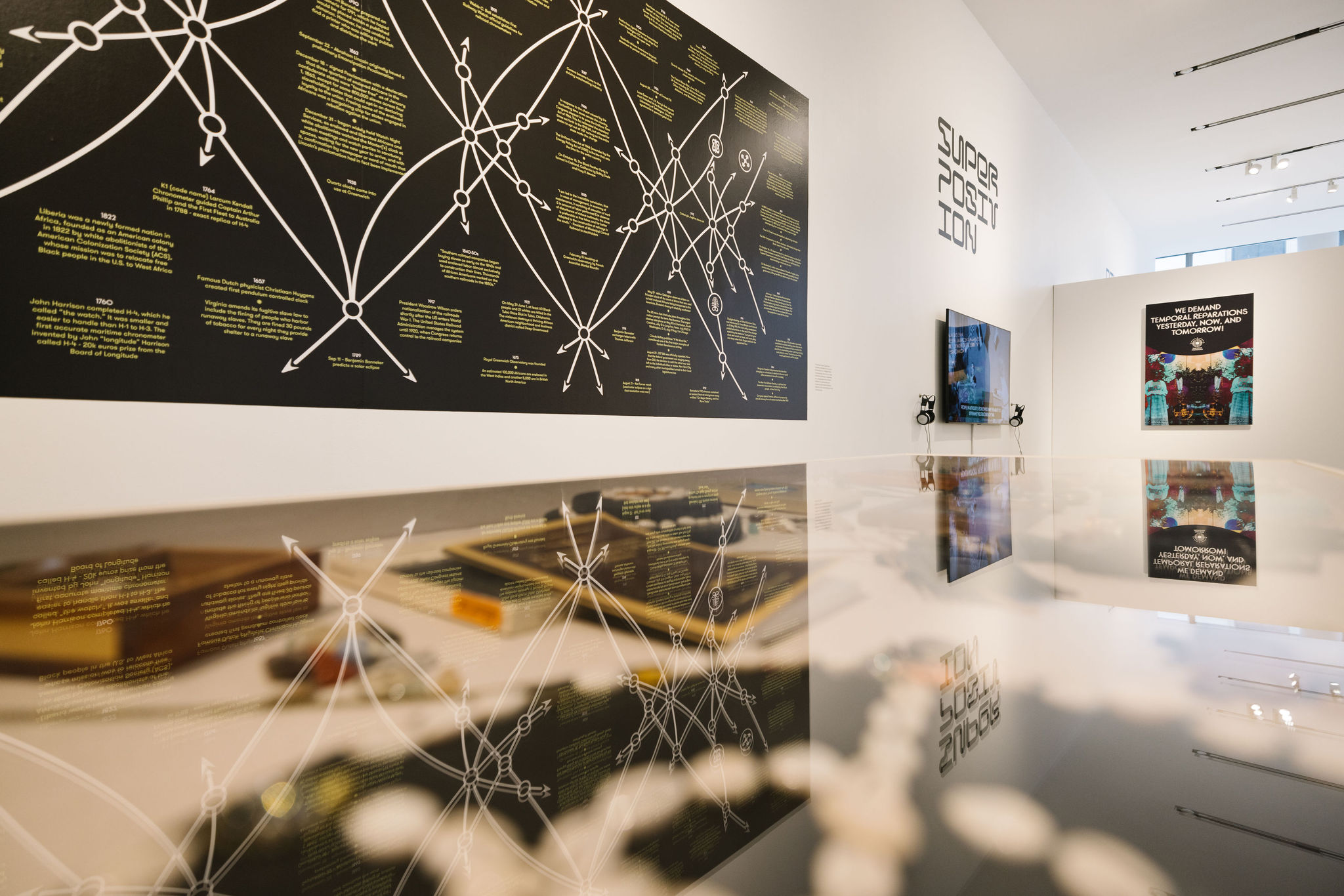
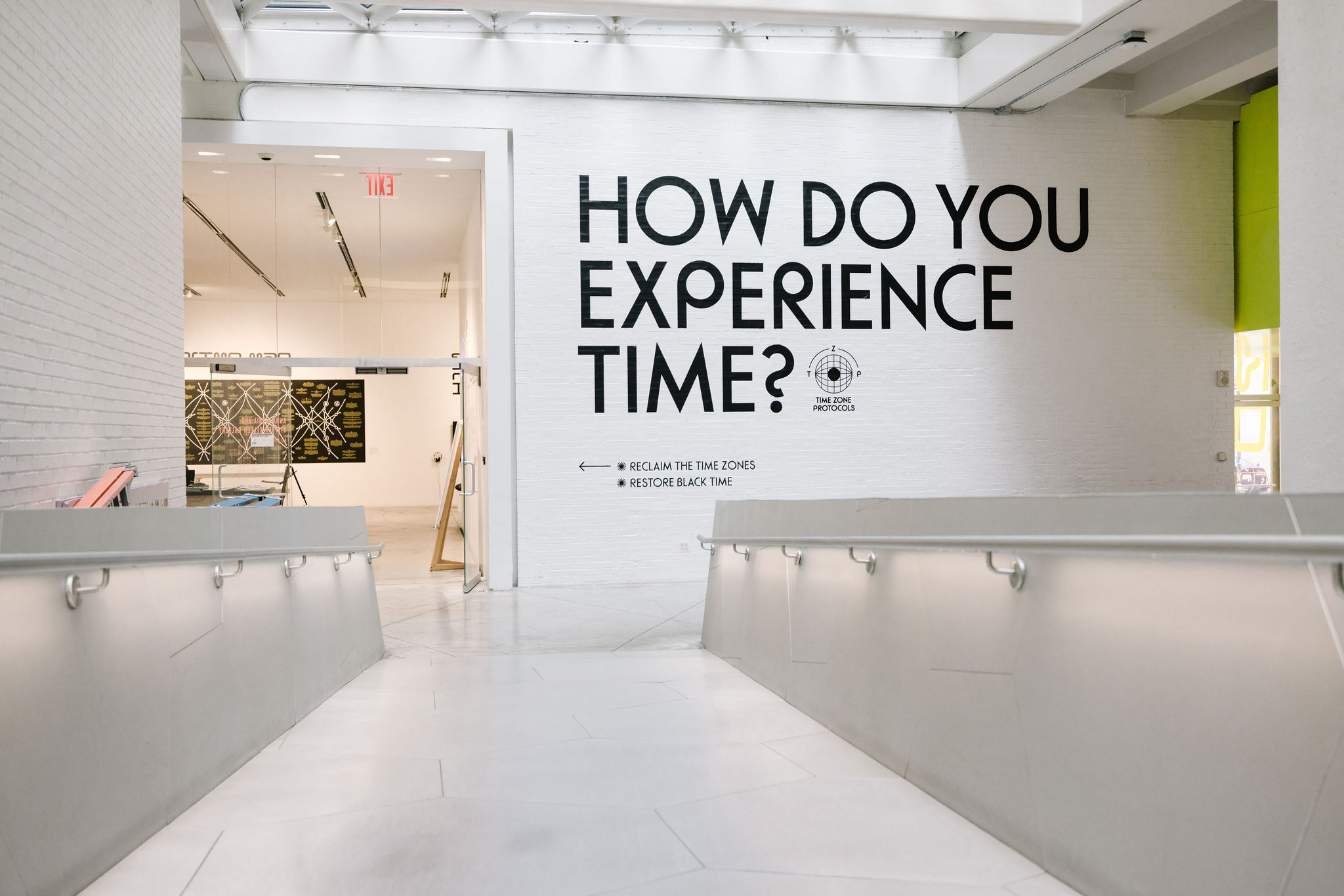
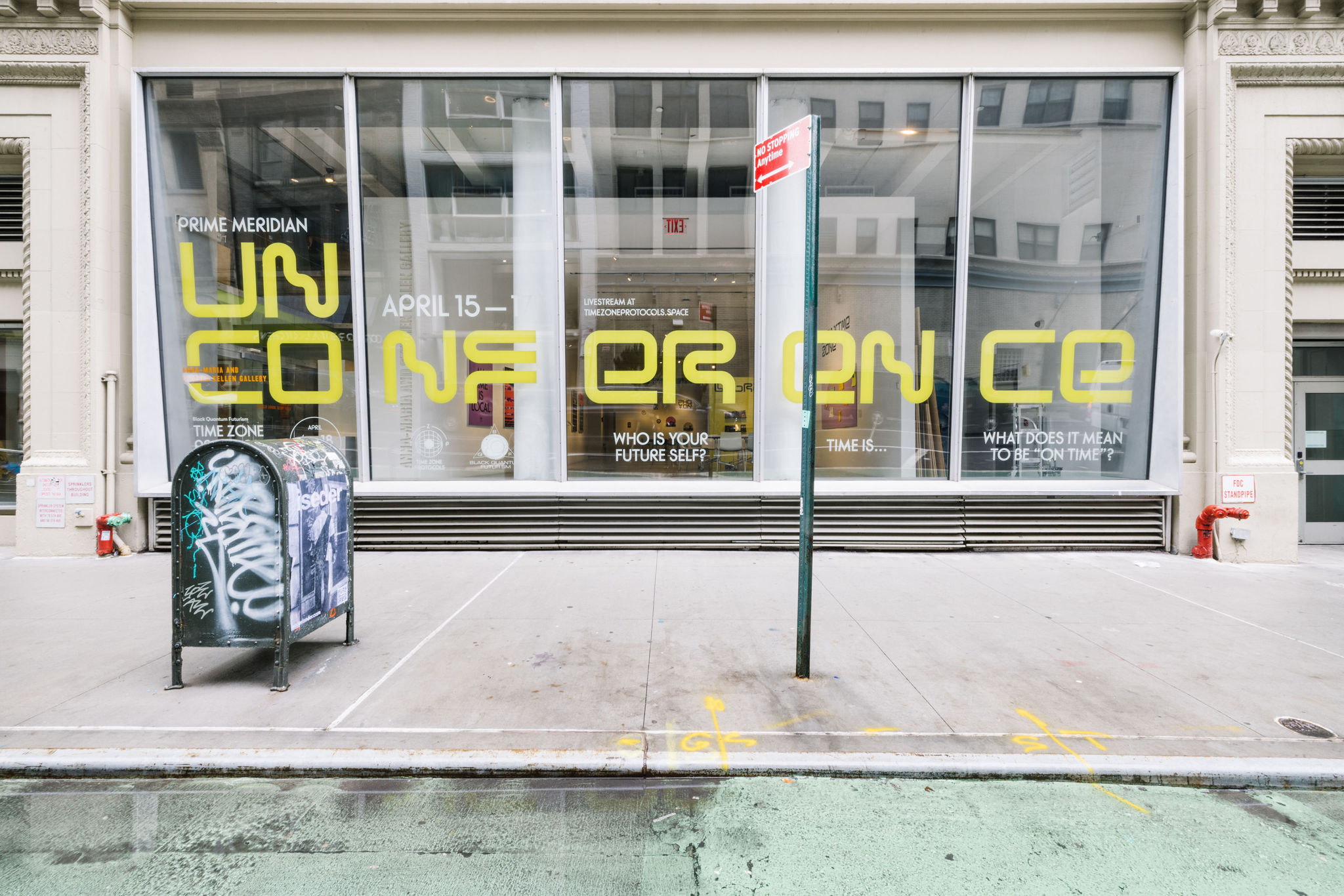
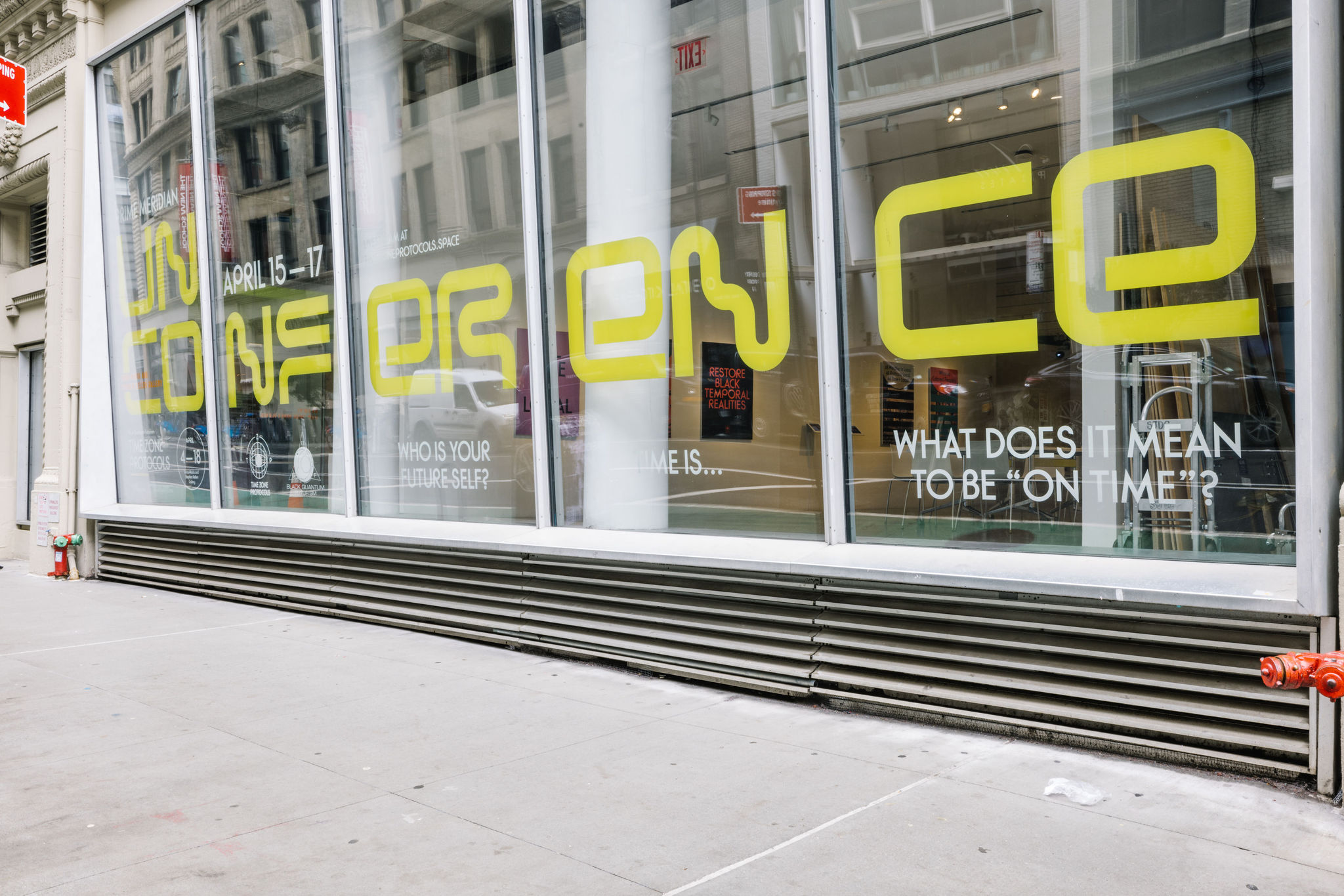
Rasheedah Phillips, Black Quantum Futurism: Time Zone Protocols, 2022. Installation view. Parsons School of Design, Anna-Maria and Stephen Kellen Gallery, April 4–18, 2022. Presented by the Vera List Center for Art and Politics. Photos by Da Ping Luo, courtesy the Vera List Center.
What is Time Zone Protocols?
Time Zone Protocols (TZP) is a space-time for rewriting the protocols of time, rezoning the time zones, and unmapping the imperialist global time colonization project utilizing Black Quantum Futurism tools and practices.
Time Zone Protocols [dot] space documents the Black Quantum Futurism: Time Zone Protocols research project, the Prime Meridian Unconference, and ongoing iterations of the project. TZP seeks to develop an understanding of Colored People’s Time as an ontological framework and alternative theory of temporal-spatial consciousness that facilitates and makes possible Black temporal agency, temporal and spatial reparations, and spatial liberation. TZP [dot] space includes Interactive ways of marking and tracking alternative temporalities, documents TZP research, and shares findings and protocols from the Unconference.
Time Zone Protocols research project, exhibition, and accompanying Prime Meridian Unconference explores the written “Protocol Proceedings” developed at the 1884 International Prime Meridian Conference leading to the decision to make Greenwich London the prime meridian and leading time zone for the world. Tracing the creation of written and unwritten political agendas, social agreements, and rules underlying Westernized time constructs with the aim of highlighting the impacts that oppressive time protocols and policies have on marginalized Black communities in the US in particular, helping to catalyze and perpetuate systems of oppression that deny communities access to and agency over the temporal domains of the past, present, and the future.
Rasheedah Phillip’s Time Zone Protocols project is a 2020–2022 Vera List Center
Fellowship commissioned project and has been supported by research
assistance, production grants, and curatorial support by the Vera List Center
for Art & Politics.